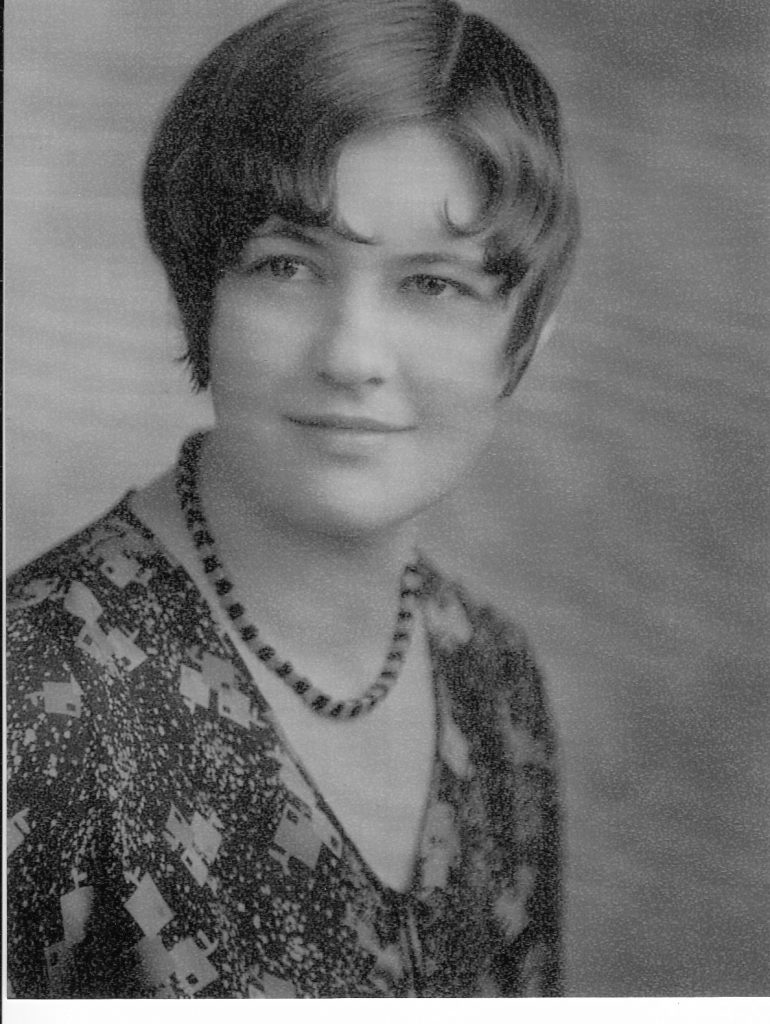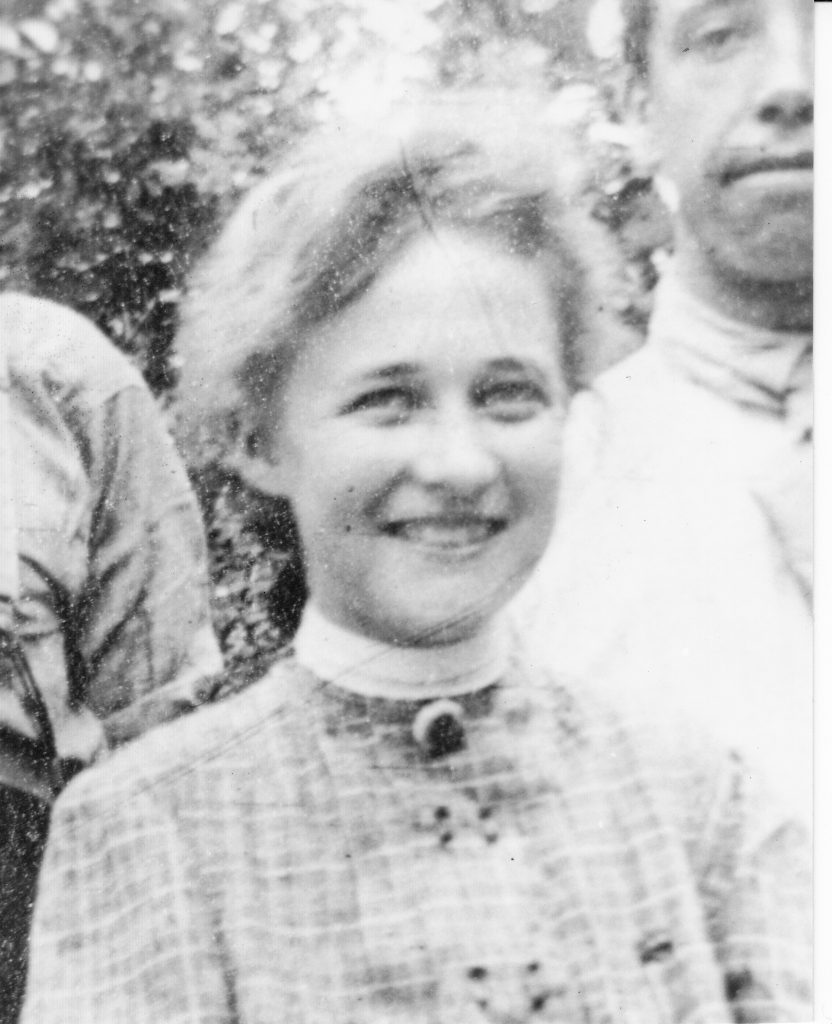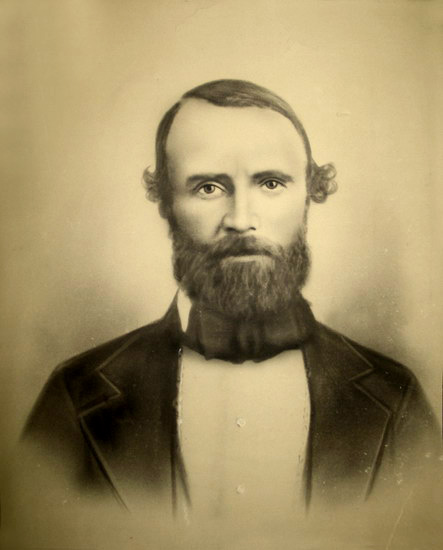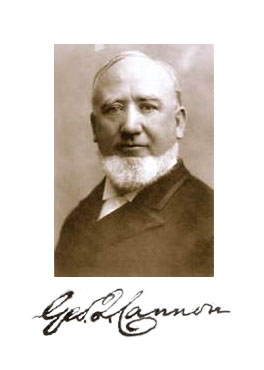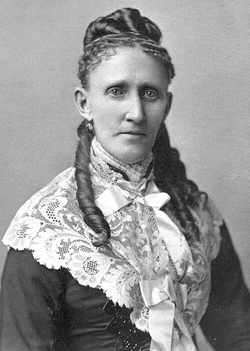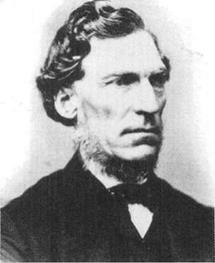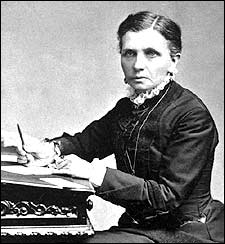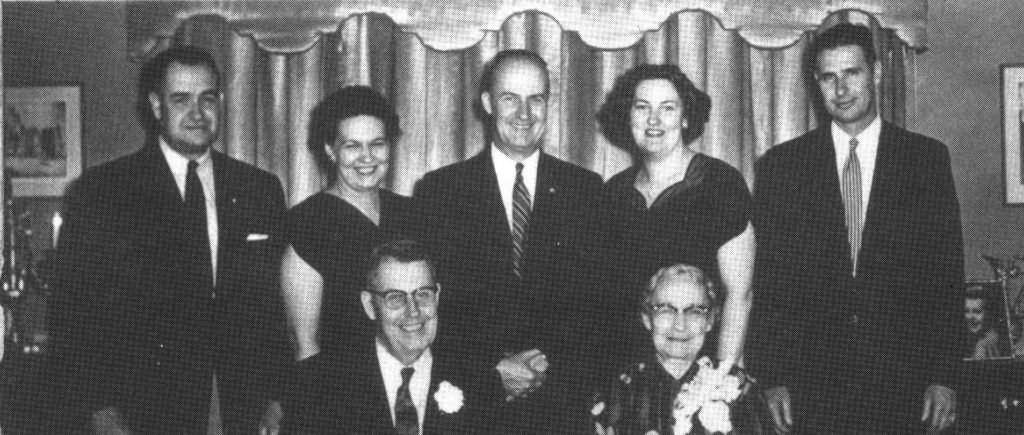
My paternal grandmother was Elizabeth Andrew. All eight of her great-grandparents and two of her great-great grandparents were Mormon pioneers who crossed the country from the Mississippi River to their new home in the Rocky Mountains and Great Salt Lake Basin in covered wagons between 1847 and 1860. Five of those pioneer ancestors were born in the British Isles where they converted to the new Mormon religion and emigrated to America to join the gathering to Utah. The other three were descended from Europeans who first came to colonial America in the early and middle 1600s. This group includes the Mayflower passenger, William Bradford and a governor of colonial Connecticut. We are also descended from the some of the Dutch settlers of New Amsterdam.
Follow this link to learn about our Mayflower Ancestors; this link for Colonial New England; this link for Colonial Dutch; and this link for our Utah pioneer ancestors.
Detailed Pedigree Chart
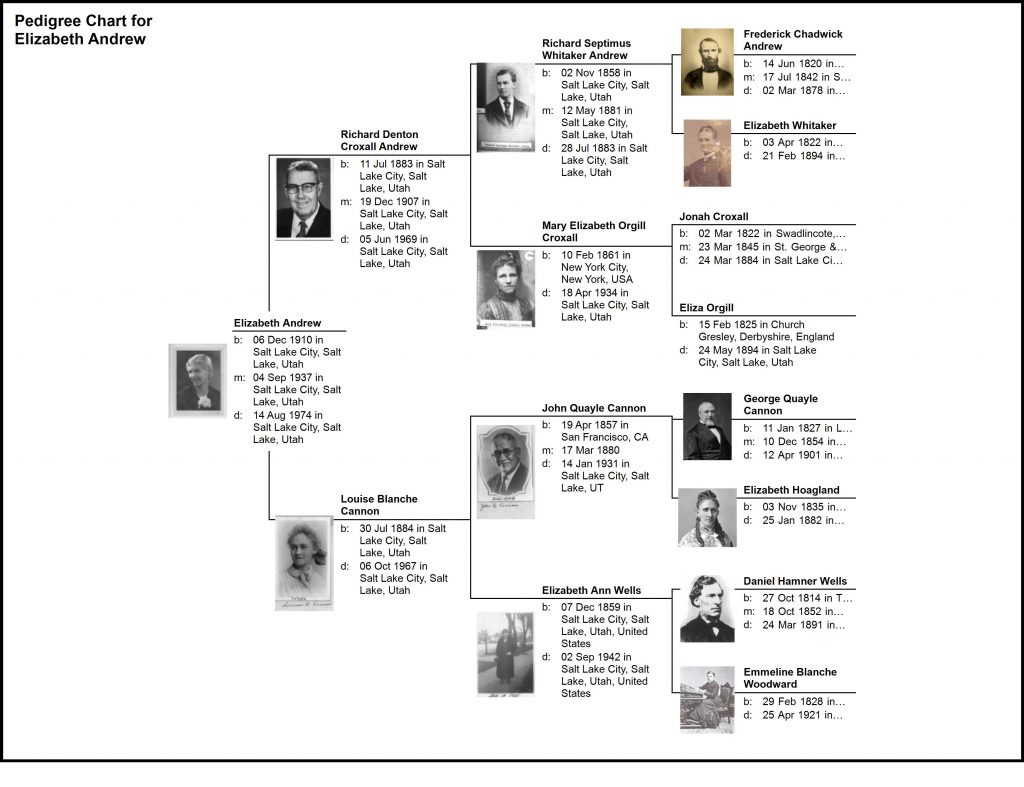
Elizabeth “Betty” Andrew 1910-1974
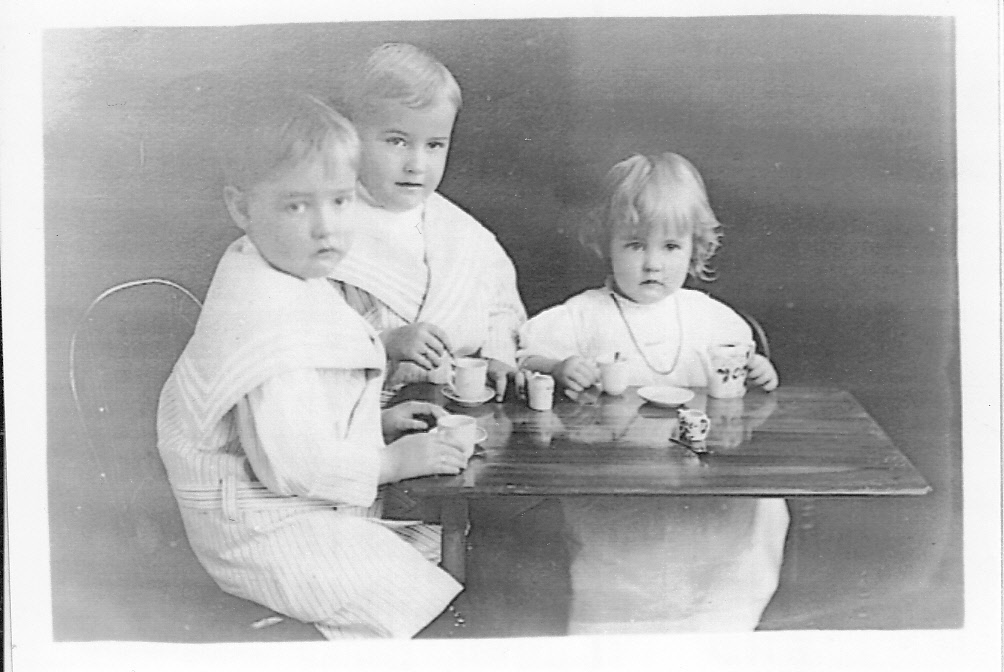
My grandmother Elizabeth (Betty) Andrew was the daughter of Richard Denton Andrew and Louise Blanche Cannon. She was born 06 Dec 1910 in Salt Lake City, Utah and died 14 Aug 1974 in Salt Lake City. She married John Edgar Fike, Sr. in 1937. In 1939 Betty and John were living at 261 W. 4th South St. And Betty was working as a clerk for company named EC&FL. By 1940 John was temporarily living in Las Vegas, Nevada at age 32 working as a collector for a farm implements company. Elizabeth and their first son, John E. Fike, Jr., were living with her parents in Salt Lake City.
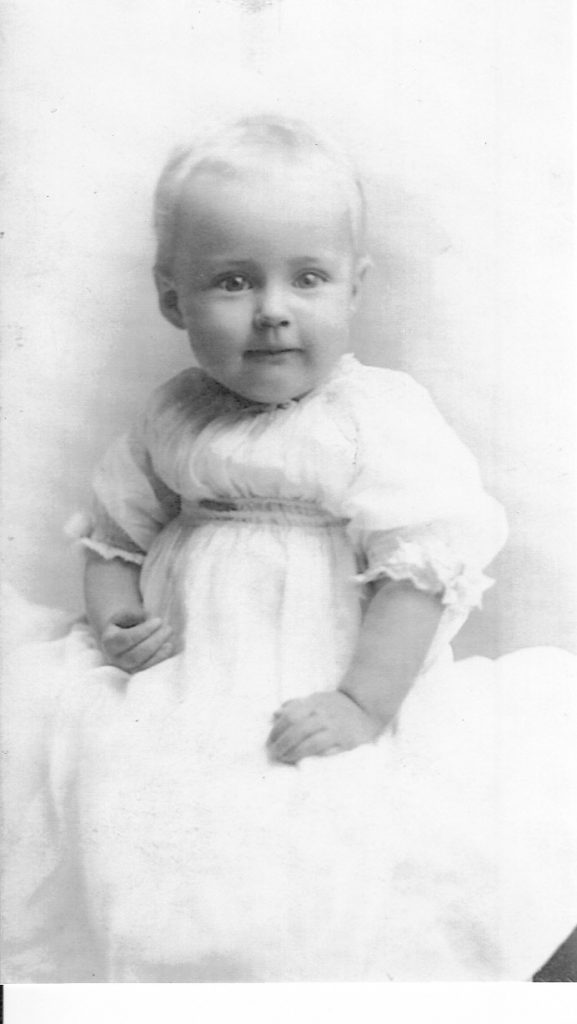
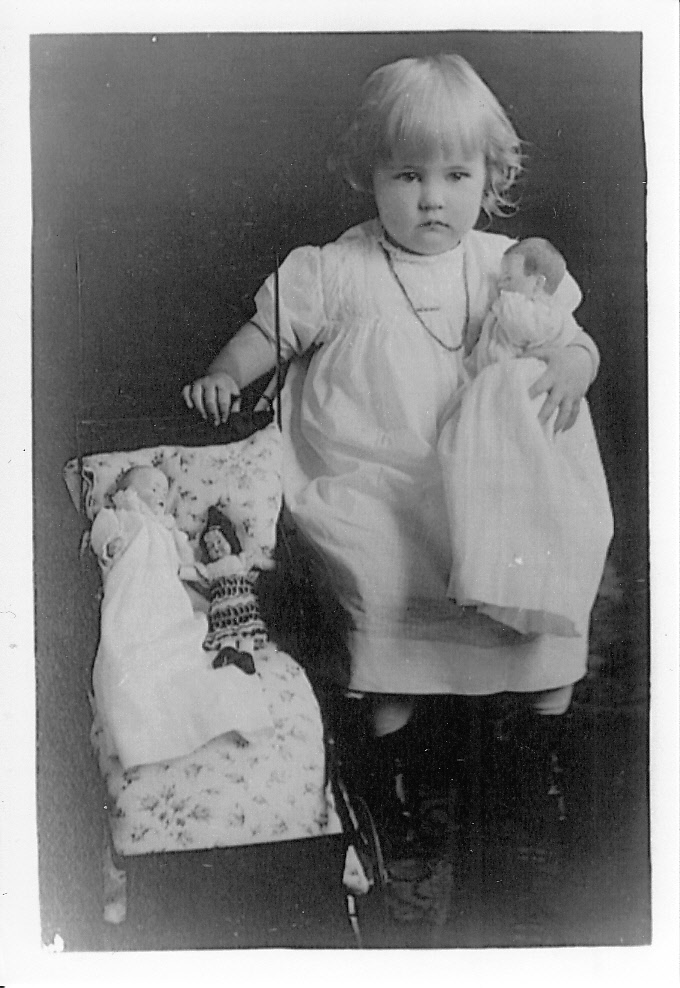
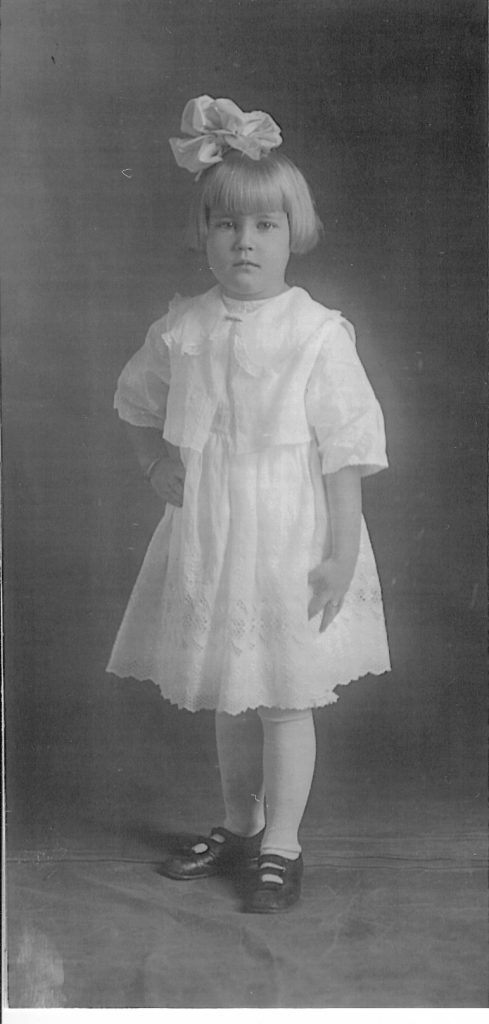
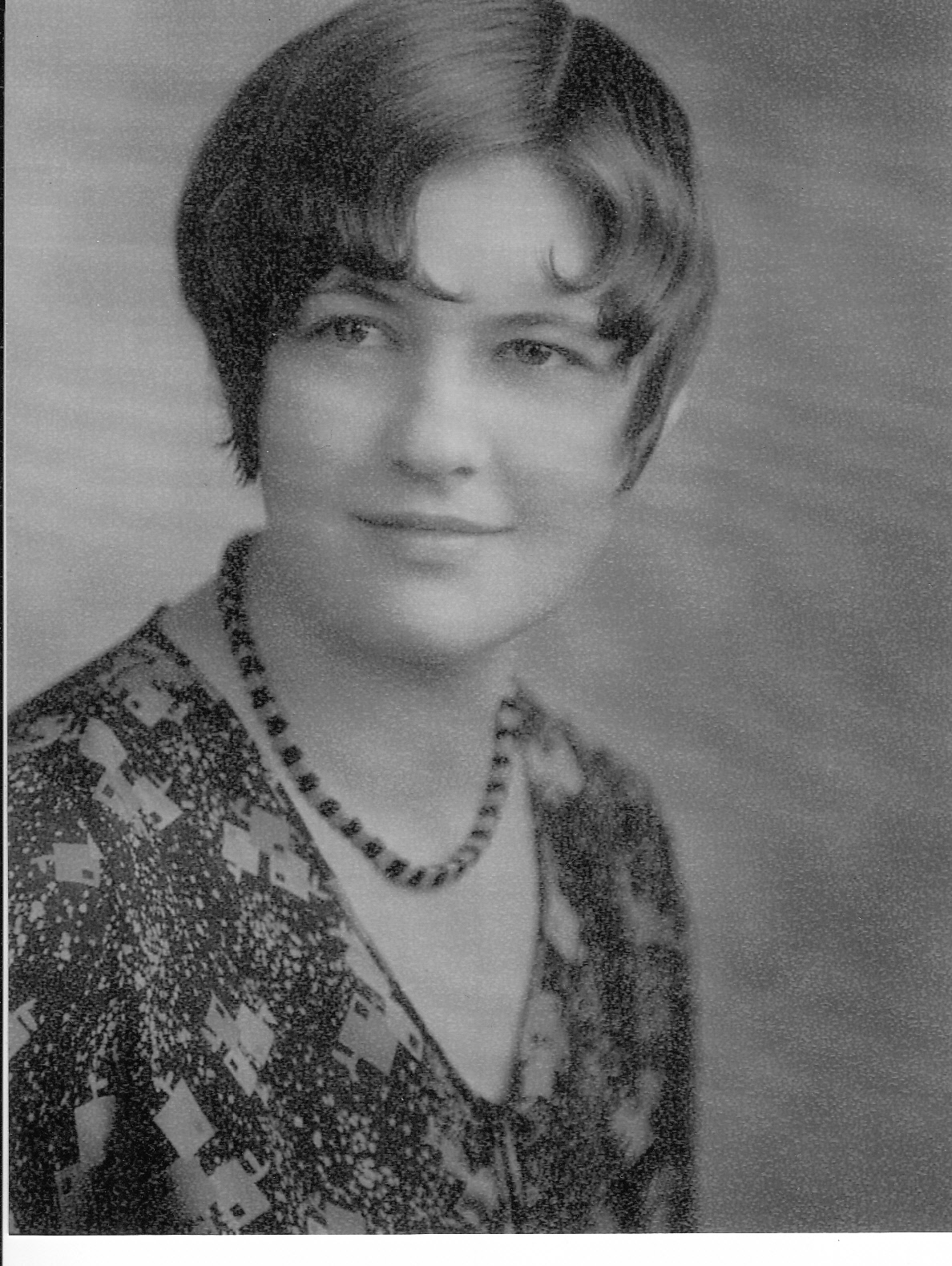
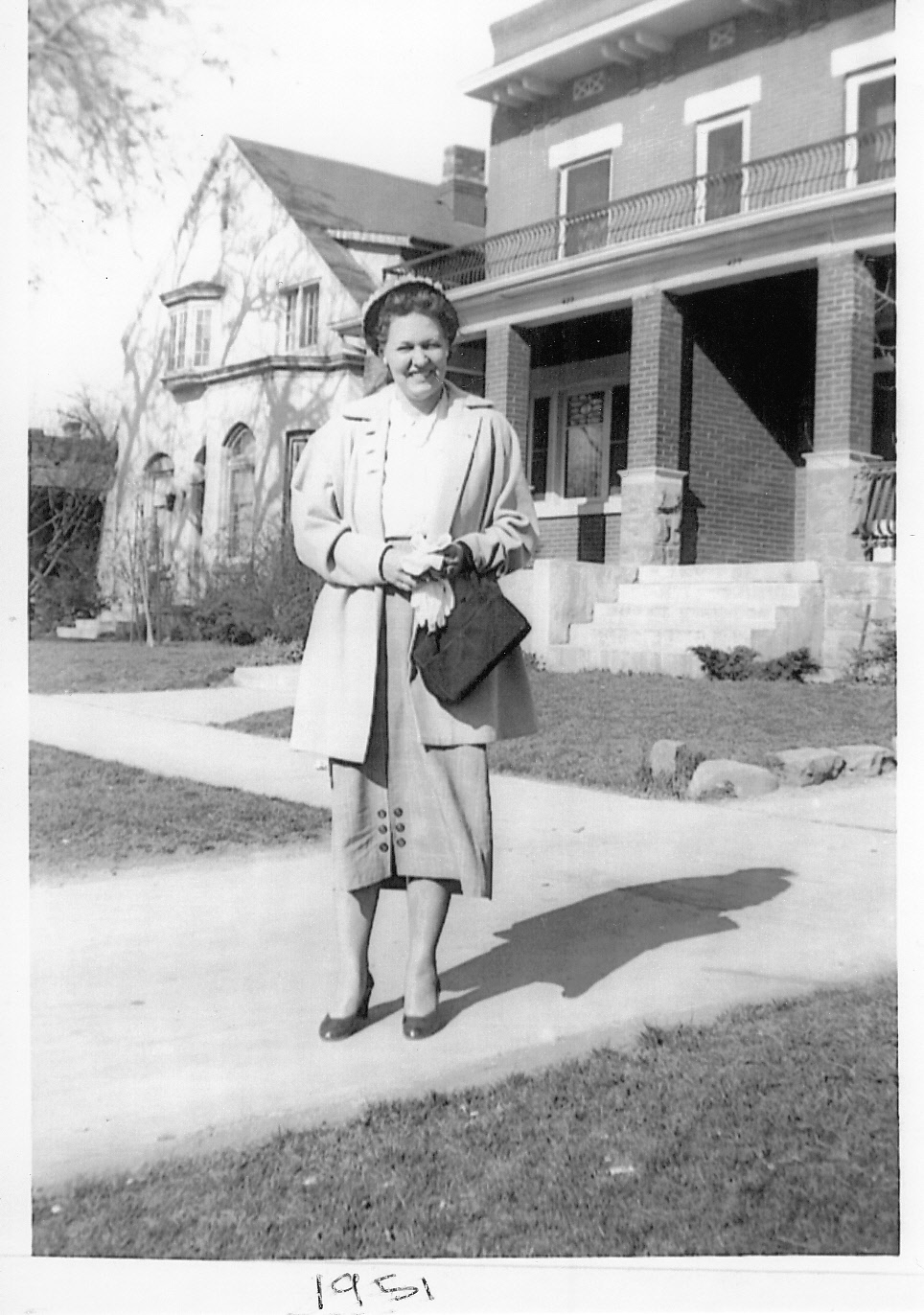

In 1941 John and Betty were living at 722 E. 3rd South #3 SLC, John was working as a clerk at Sears, and Betty was still working for EC&Fl.. By 1942 the family moved to Ogden, Utah and were living at 2610 Brinker Ave. John was a manager for Sears in Ogden. In 1944 John took a job as a brakeman for the Union Pacific Railroad. They lived on Brinker Ave until 1956. Grandpa Fike rode the trains from Ogden station through Weber Canyon and on to Green River. There he would change crews and bring a westbound train back into Ogden.
Betty and John were young adults just starting a family during difficult times. Their eldest son was born as the country was coming out of the great depression. The financial crisis and unemployment hit Utah hard. Soon after they went through World War Two with even more challenges. I remember Grandma Fike showing me World War II ration cards for gasoline and sugar that she kept as mementos of those times.
My earliest memories of her were in the 1960s when she was living in a house on 349 Almond Street in Salt Lake City. It was a two bedroom one bath house on the corner of Almond and Apricot streets on the steep slope of the foothills a mile or so southwest of the State Capitol. She worked as a secretary at Fort Douglas Army base. Fort Douglas was built during the Civil War to guard overland trails and the telegraph lines that crossed the Rockies. It closed in 1991 and the Army turned the building over to the University of Utah. There is a Fort Douglas museum open to the public.

Louise B. Cannon 1884-1967
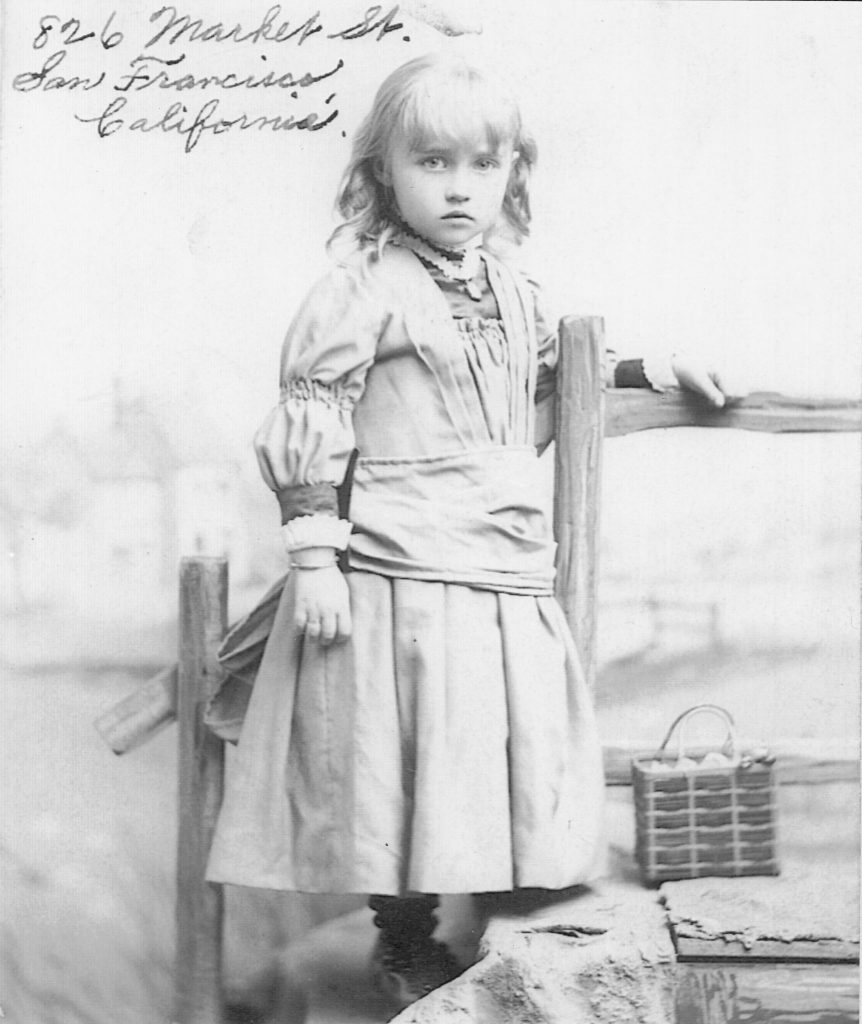

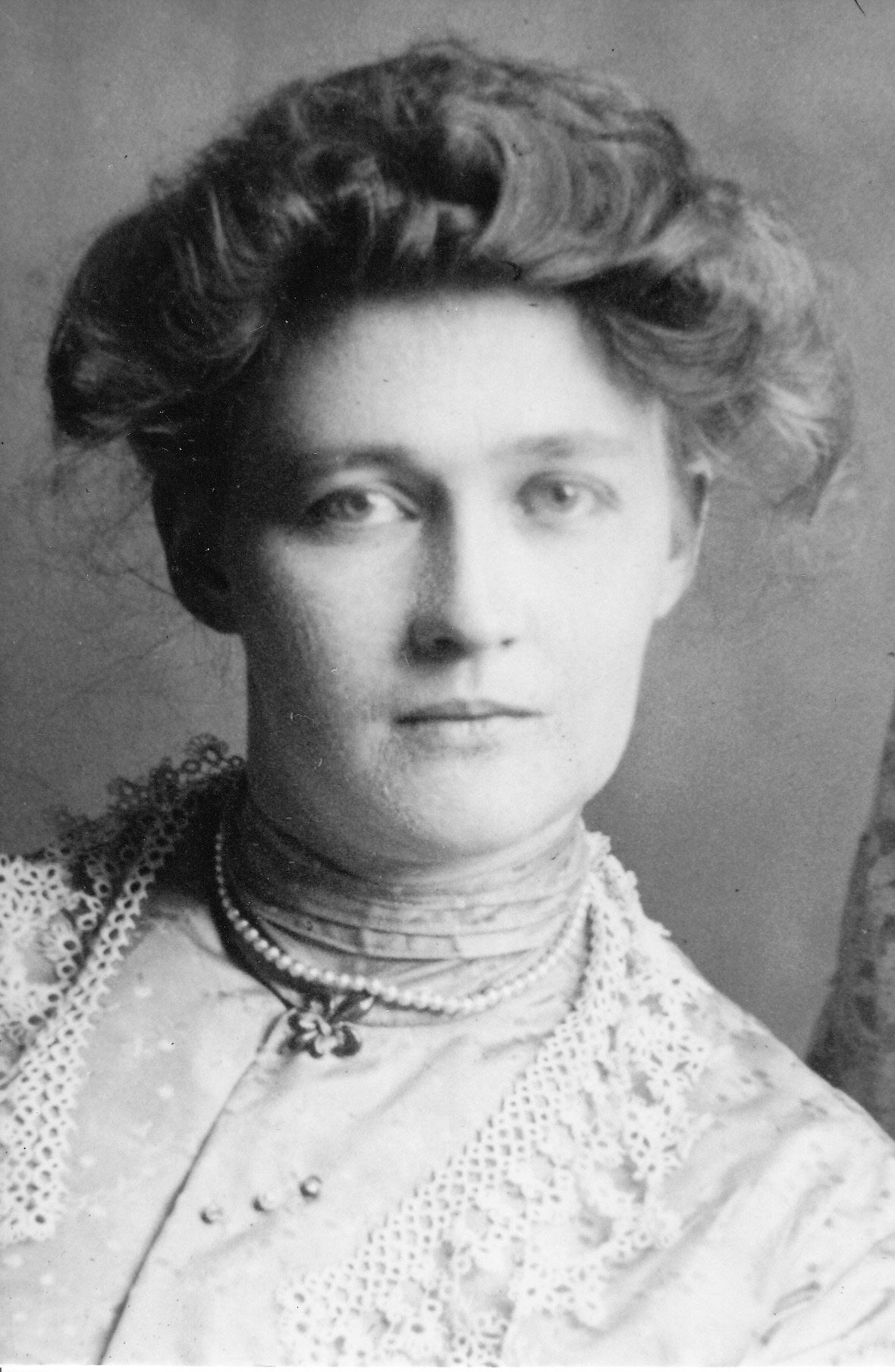
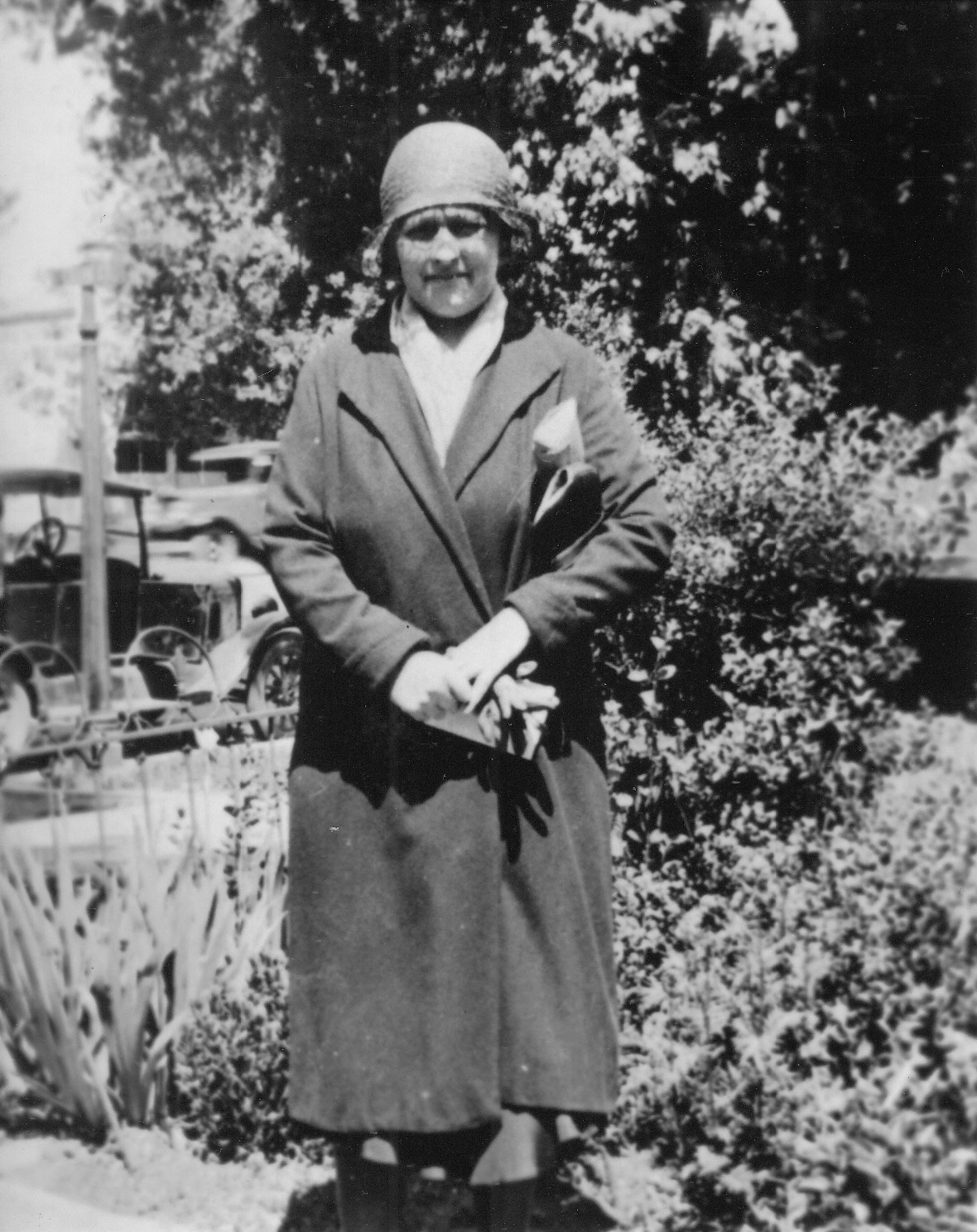
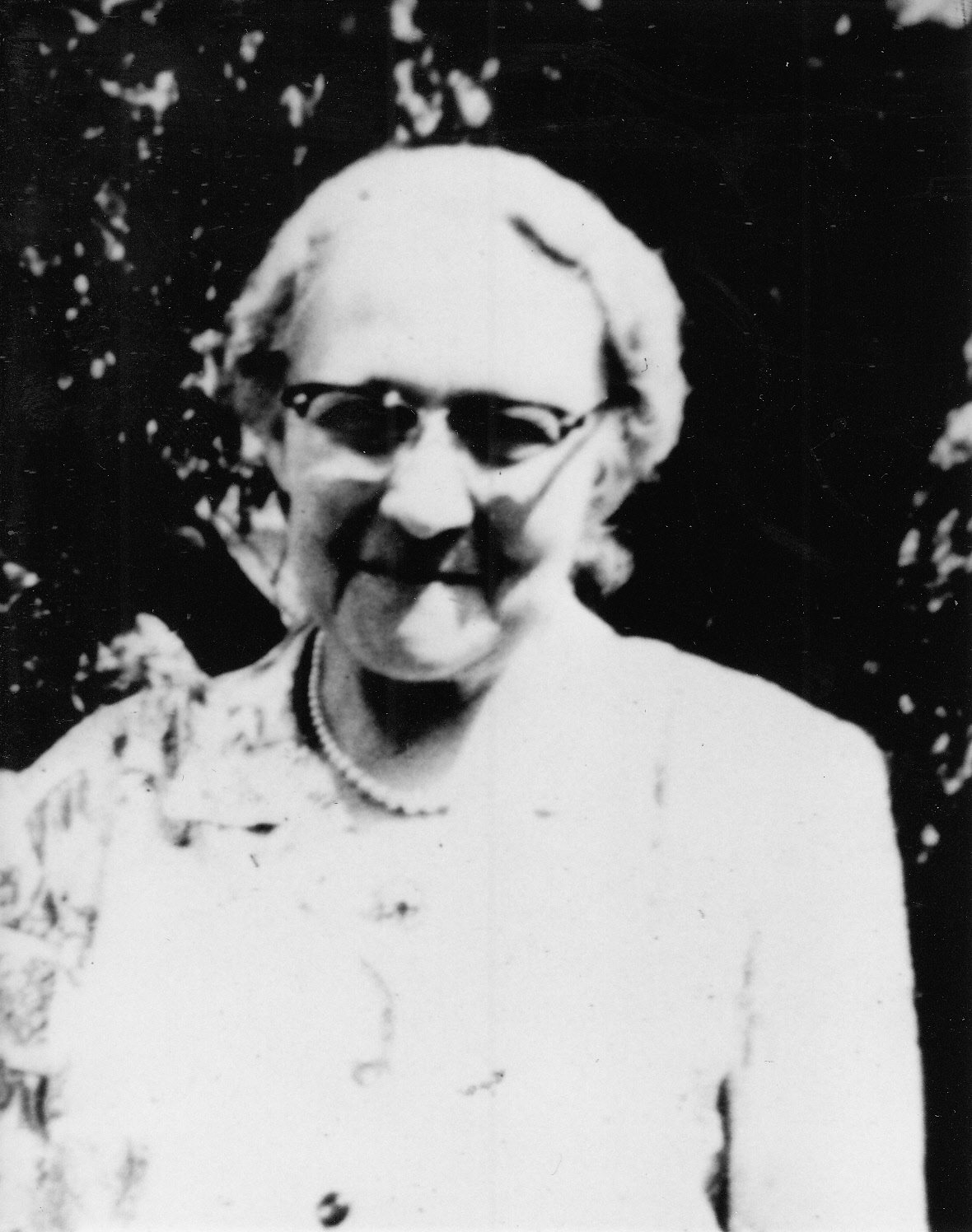
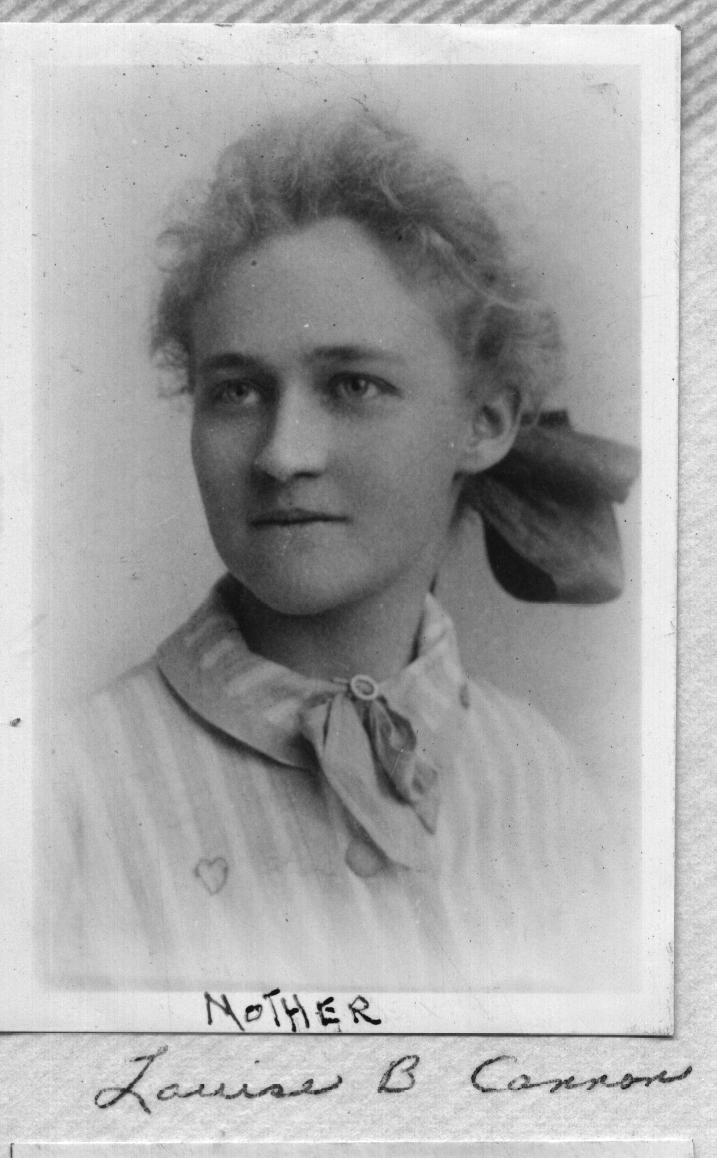
A short history of Louise Blanche Cannon Andrew as written by herself. Including images of her handwritten pages
“At the request of my children and grandchildren I am attempting to write this little history of my life.
Born to John Quayle and Elizabeth Ann Wells Cannon on July 30, 1884 at Grandma Wells’ home on State Street just north of 3rd South where Axelrad’s Furniture Store now stands.
Blessed when eight days old and named Louise Blanche Cannon by Grandpa Daniel H. Wells.
No one could possibly have had a happier childhood, girlhood, and womanhood than has always been mine to enjoy.
Baptized in Ogden River in Ogden Canyon by Papa on my eighth birthday July 30, 1902 and confirmed later by him on the same day.
Attended the Sacred Heart Academy with two little Catholic girl neighbors – Agnes Grill and Lillian Langstorph – while living in Ogden, also a private kindergarten taught by Mama’s cousin, May Earl.
Schools attended in Salt Lake – private school in one room, taught by Mrs. Doyle, semi-private school in a Methodist Church taught by Mrs. Turner. Public schools- Waterloo (now the Whittier), 40th District (now the McKinley), Oquirrh, and Salt Lake High School. Also Cooking School taught by Aunt Grace Cannon, and extension course in Home Economics, University of Utah.
Church activities included work in Primary, Sunday School, Young Women’s Mutual Improvement Association in Cannon Ward, Seventh Ward, also Stake work in these organizations in Pioneer Stake.
Because of ill health, have not been actively engaged in Church work in Eighth and North Eighth Wards in Liberty Stake.
Married to Richard Denton Andrew in the Salt Lake Temple December 19, 1907 by President Joseph F. Smith.
Our first babies – twin boys – Richard Cannon and Denton Cannon – were born Monday morning at 9:10 and 10:10 August 31st, 1908.
Elizabeth, our first daughter was born at 6:00 a.m. on a cold snowy day, December 6, 1910.
John Quayle was born at 3:20 Thursday afternoon (a beautiful day) October 23, 1913.
Our youngest child, Louise, was born on a beautiful bright Sunday afternoon at 3:30 ( the day after Christmas) December 26, 1920.
No finer family could any mother ever wish for. Their love, kind ness, consideration and thoughtfulness have sustained their Daddy and me at all times and we are indeed grateful for them and their devotion.
All my life I have been thankful to my Heavenly Father for His goodness unto me and the many blessings which He has bestowed upon me.
In our home with my eleven brothers and sisters, in my growing years with my relatives and friends, and in my later years with our own family and friends, I consider my life has just been ideal.
Outside of family and Church associations, I was at one time a Daughter of the Utah Pioneers, and for many years a Daughter of the Revolution, but always my first interest and greatest happiness and contentment has been in my home with a devoted husband and children whose loving kindness I can never adequately repay.
Images of Louise Cannon’s Handwritten Biography



2022 remodel of Richard and Louise Andrew’s Apartment in the 1960s. 557 1st Ave. N. It was the second floor right in this photo.
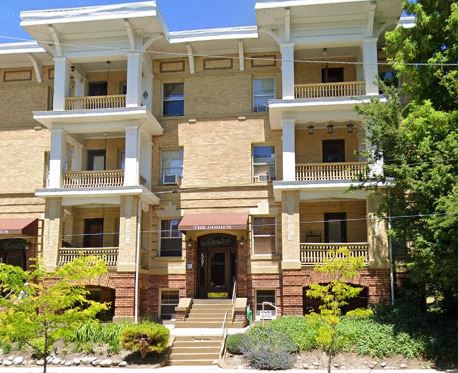
Richard D. Andrew 1883-1969
Richard Denton Croxall Andrew, son of Richard Septimus Whitaker Andrew and Mary Elizabeth Orgill Croxall was born on 11 Jul 1883 in Salt LakeCity, Utah. He married Louise Blanche Cannon on 19 Dec 1907 in Salt Lake City and died on 05 Jun 1969 in Salt Lake City.
Louise Blanche Cannon, daughter of John Quayle Cannon and Elizabeth Ann Wells was born on 30 Jul 1884 in Salt Lake City, Utah. She died on 06 Oct 1967 in Salt Lake City.

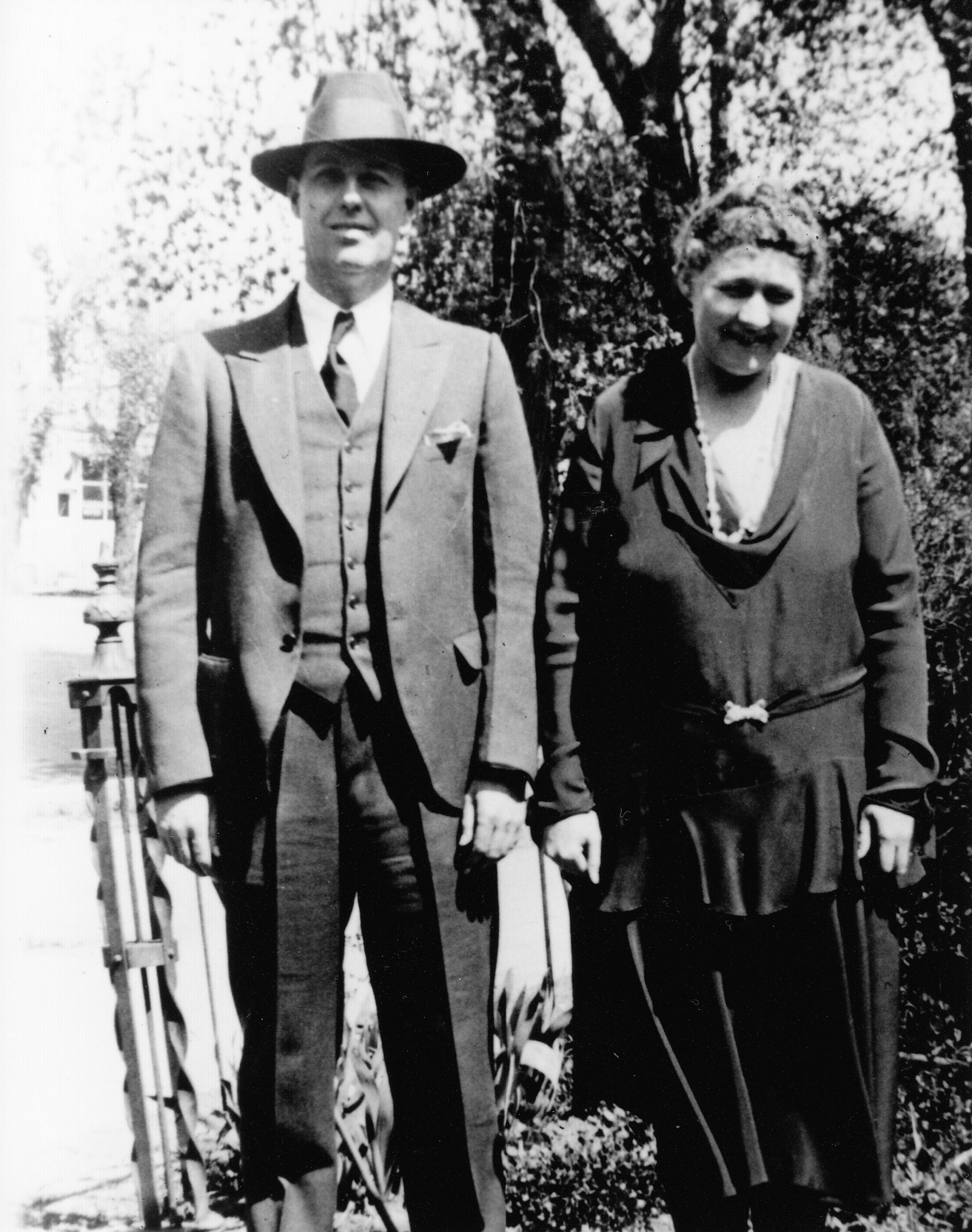

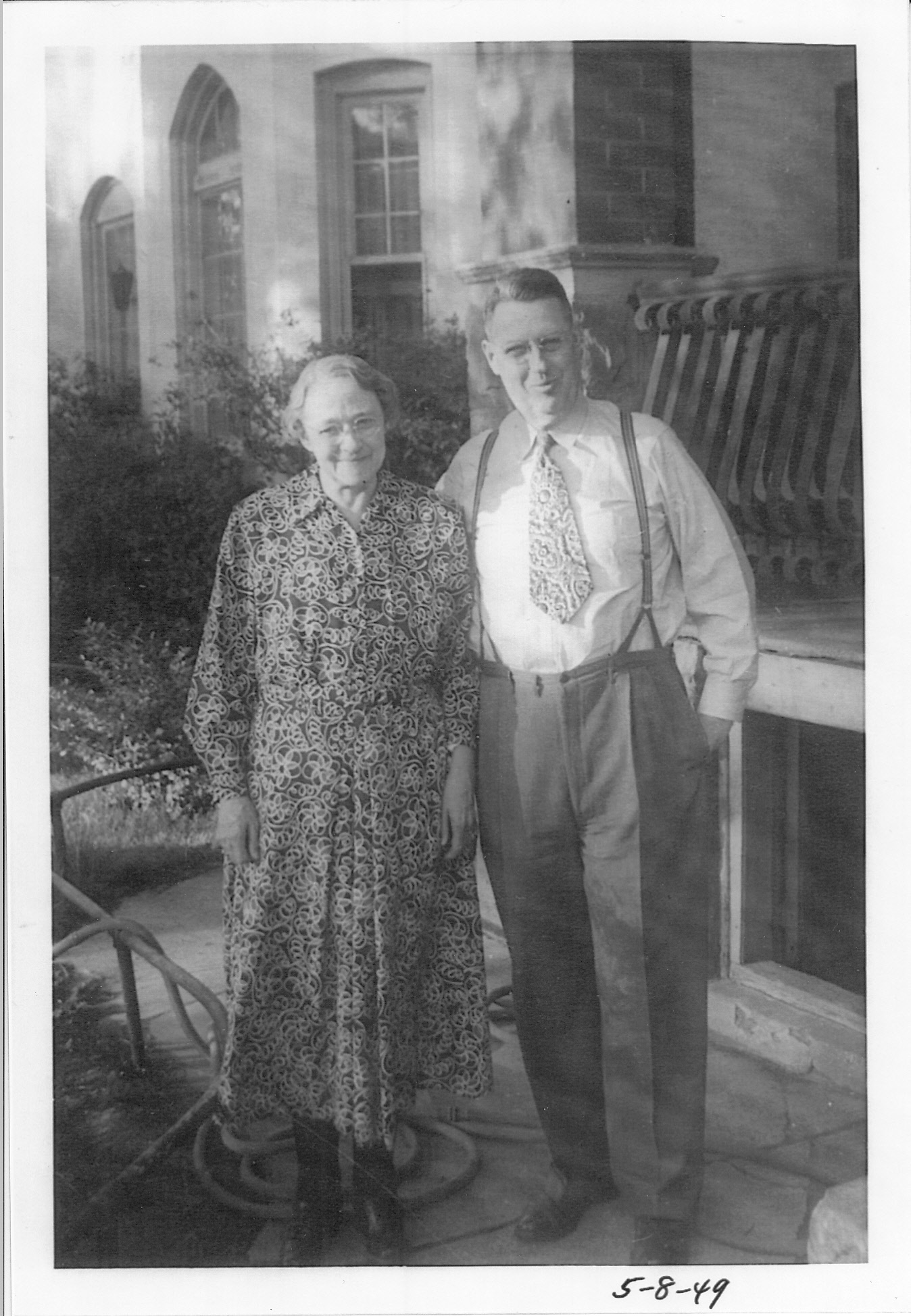
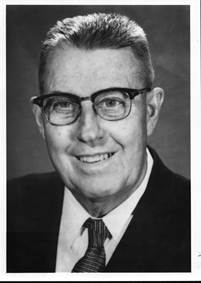


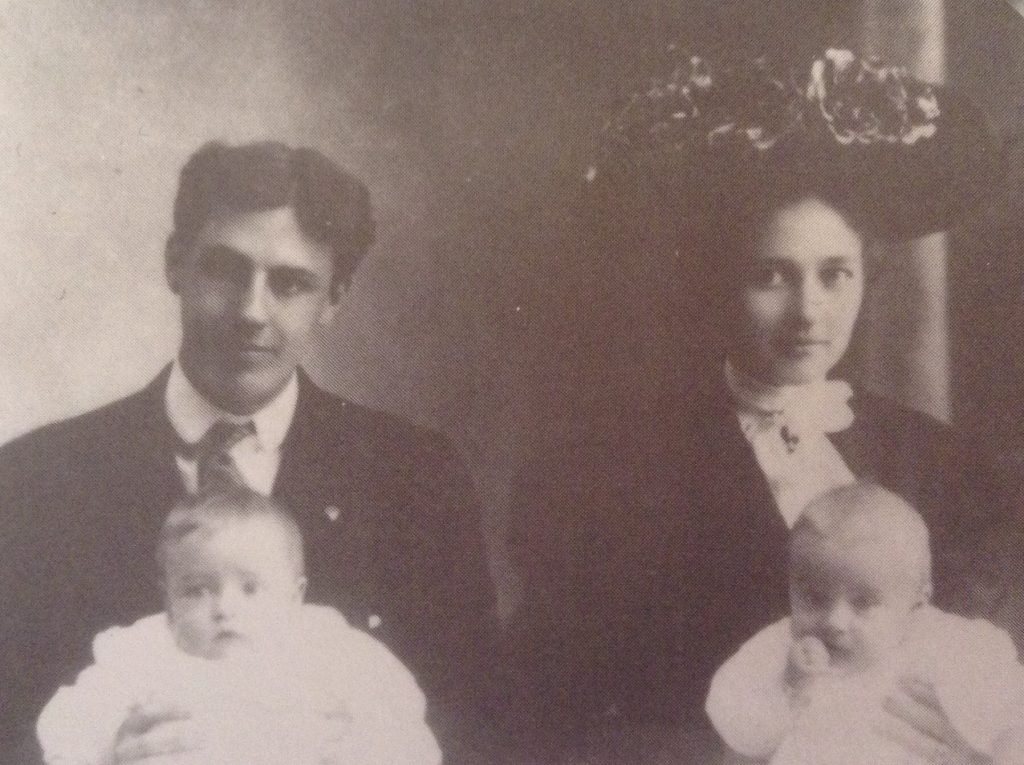

Biography from the Book: “Ancestors and Descendants of Frederick Chadwick Andrew”.
“Richard Denton Croxall Andrew was born July 11, 1883 in Salt Lake City, Utah (at approximately 323 South 1st West Street), the son of Richard Septimus Andrew and Mary Elizabeth Croxall Andrew. He was two weeks old when his father was accidentally killed. After this tragic event, he and his mother moved in with his grandparents, Jonah and Eliza Orgill Croxall, who also lived on 1st West.
Although called “Dick” by his co-workers, he was affectionately known as “Rich” to his mother, wife, relatives, and friends.
While growing up he attended the old Seventh Ward School in the basement of the seventh ward Meeting House, and a school later known as the Whittier School, which was located just west of the Seventh ward Meeting House. It is noted in his Book of Remembrance he studied piano when about ten years of age, and in 1902 joined The Tabernacle Choir, holding membership card Tenor #47. At a young age he sang in a quartet that was offered a vaudeville contract (which he declined) to tour the Orpheum Circuit.
A humorous story of his youth that he related to his children was when as a young boy he was given a bee be gun and in trying it out shot his pet canary, and promptly burst into tears.
He attended the Grant school and graduated from the 8th grade. After which, he attended the Salt Lake High School for one year. At fifteen years of age he had to leave school to work. His first job was at a grocery store located in the seventh ward which was owned by his uncle, George Bowles.
Later he worked for the Rio Grande Western Railway, and while working there was called on a mission to Switzerland, leaving May 6, 1903, and returning February 17, 1906. After laboring in Switzerland for 13 months, he was sent to Germany: the Swiss and German Missions having been combined. While on his mission he served under Presidents Levi Young, Hugh J. Cannon, and Serge F. Baliff. While on his mission he acted as Presiding Elder in Luzerne Switzerland and Leipzig Germany: acted as Assistant secretary of the Swiss mission for some time; travelled around the Swiss mission copying records; had charge of the book department and printing of books and tracts for some time in Leipzig Germany.
Upon returning from his mission, Richard worked in the office of the Dinwoodey Furniture Company, and commenced employment with the Utah National Bank in 1906 and was with them through several name changes Utah State National Bank, First National Bank of Salt Lake City, and Zions First National Bank. During some of his vacations he worked for the Utah Copper Company at Garfield, Utah.
An amusing incident occurred while he was employed as a teller at the bank. He was waiting on an Oriental fellow one day when the customer shouted that someone had stolen his bank book. Richard looked up in time to see a man running out of the front door of the bank, and immediately jumped over the counter in hot pursuit of the thief. He chased the man west on First South, capturing him on Richards Street where he held him until arrival of the police. From that time on he was jokingly called “sheriff” by some of his co-workers.
Richard was employed by the bank for over 50 years and was an Assistant Cashier when he retired in February 1959 at 75 years of age. After his retirement seldom a day went by when he could not be seen on Main Street, until the time of his passing, having lived close to Main and working on it nearly all of his life.
On December 19, 1907 Richard married Louise Blanche Cannon in the Salt Lake Temple, the ceremony being performed by President Joseph F. Smith. Following their marriage, they made their home at 26L West 4th South Street. Richard’s mother lived with them until her death in 1934. They were blessed with five children: Twins, Richard Cannon (Dick), Denton Cannon (Dent), Elizabeth (Betty), John Quayle (Jack), and Louise.
When the children were young, Richard would take them for walks and on hikes to nearby canyons with the boys fishing in nearby mountain streams; always walking, and always catching fish. He also took his children to see the trains and the old roundhouse, switching cars and engines back and forth, this being only a short distance from the old home. He loved to walk and living close to town always walked to and from his work.
Richard had never owned or driven a car until 1955, when at 72 years of age he took private driving lessons and then bought a 1950 model Chevrolet. He continued to drive until past 80 years of age.
He loved to travel, and his boys took him on many trips around the country.
Richard loved sports and even in his 80’s would attend the University of Utah football games with family members. When he was younger, he would also play tennis with his children. In 1928 he originated a petition to the City Commission requesting that tennis courts be constructed in Pioneer Park. This was approved by the City Commission. While employed at the bank, he played baseball in the Bankers League and also handball, as there was a handball court on the top floor of the bank building on First South and Main Street.
During World War I he joined an Army Reserve Unit which trained at Fort Douglas in the early morning before work, and during World War II he was a member of the Salt Lake City Defense Council holding the position of Sector Warden, Block 58.
After starting to work, Richard pursued his studies through night school, correspondence, and extension work. He attended several seasons of night school at the old Salt Lake Business College; took correspondence and extension courses from International Correspondence Schools, Dickson School of Memory, LaSalle Extension University, American Institute of Banking, University of Utah, and Zanetian Art College of Penmanship.
He was a beautiful writer, specializing in ornamental Spencerian handwriting, and was called upon hundreds of times to write certificates, place cards, etc. for various Church, civic, and business groups. He never charged, nor did he ever accept payment, for these services. When receiving Christmas cards from him, many of his friends used to say that they would eventually throw the card away but would always keep the envelope because of his beautiful penmanship.
Richard was sustained as Bishop of the Sixth-Seventh Ward August 21, L927, and served until his release on May 8, 19 38; serving through the entire difficult years of the great depression in a Ward in which most of the members were considered in the lower and lowest strata of the economic spectrum. Seldom had a day gone by during these worst years when he did not return home after a tiring day t s work to find his living room full of people seeking the necessities of life. He will always be remembered and respected for his fair, patient, compassionate, and just way in which he exercised the wisdom and discernment of his calling.
In May of 1969 he fell at home, suffering a broken hip which resulted in other complications, and he passed away in the LDS Hospital on Friday, June 6, 1969, just short of his 86th birthday. At the time of his death he was a member of the High Priests’ Quorum of the 20th Ward in Ensign Stake.
Richard S.W. 1858-1883 and Mary Croxall 1861-1934 Andrew
Richard Septimus Whitaker Andrew, son of Frederick Chadwick Andrew and Elizabeth Whitaker was born on 02 Nov 1858 in Salt Lake City, Utah. He married Mary Elizabeth Orgill Croxall, daughter of Jonah Croxall and Eliza Orgill on 12 May 1881 in Salt Lake City. He died on 28 Jul 1883 in Salt Lake City.
Mary Elizabeth Orgill Croxall, daughter of Jonah Croxall and Eliza Orgill was born on 10 Feb 1861 in New York City, New York. She died on 18 Apr 1934 in Salt Lake City, Utah.
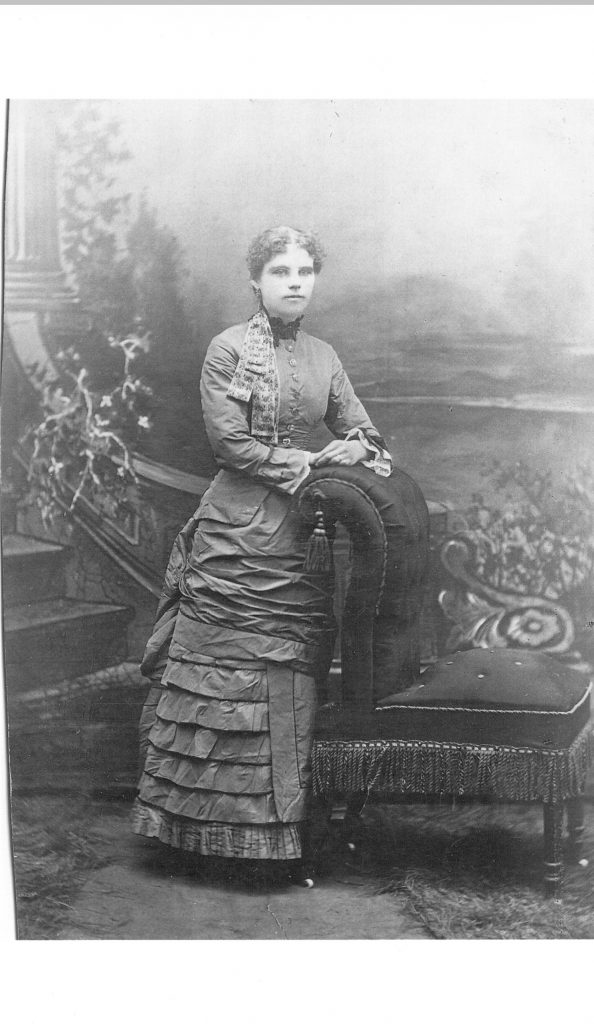
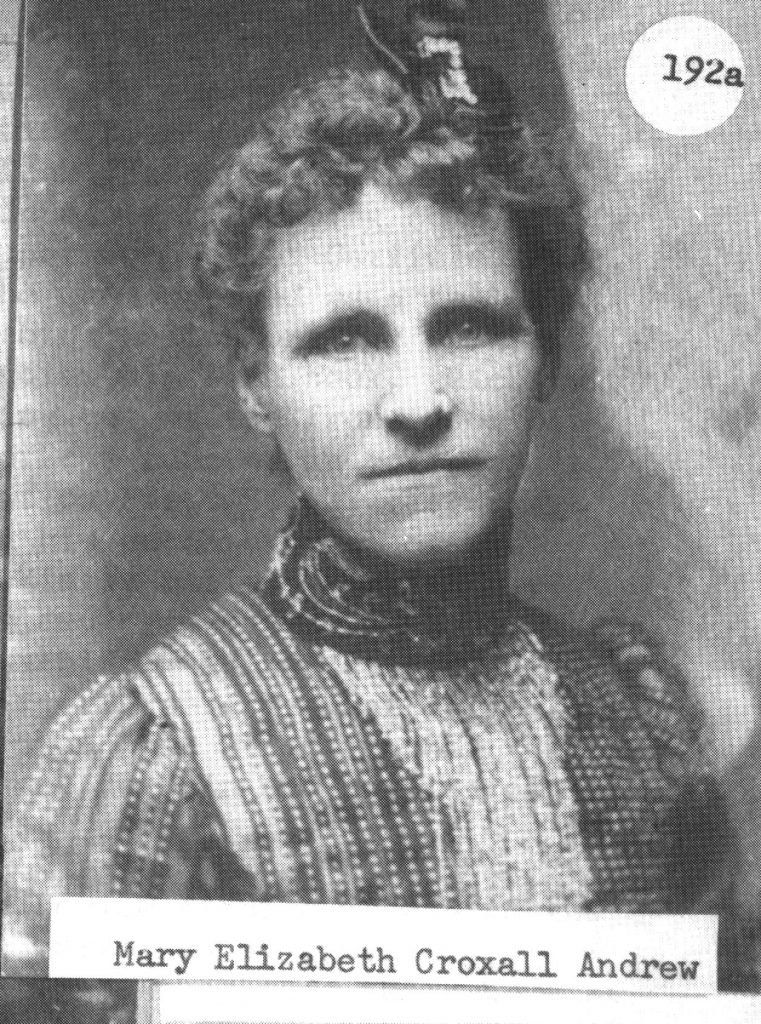
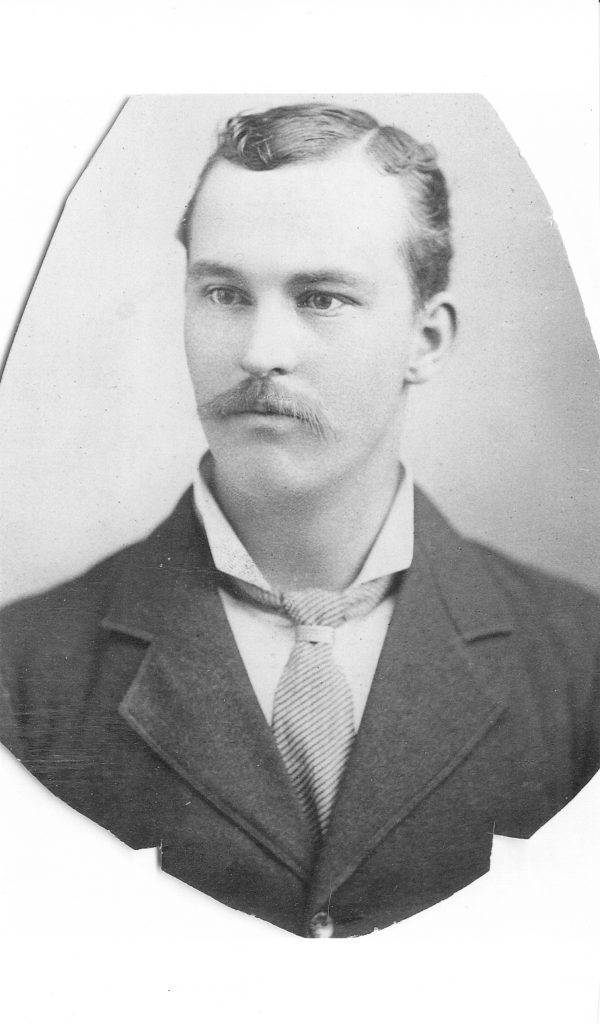

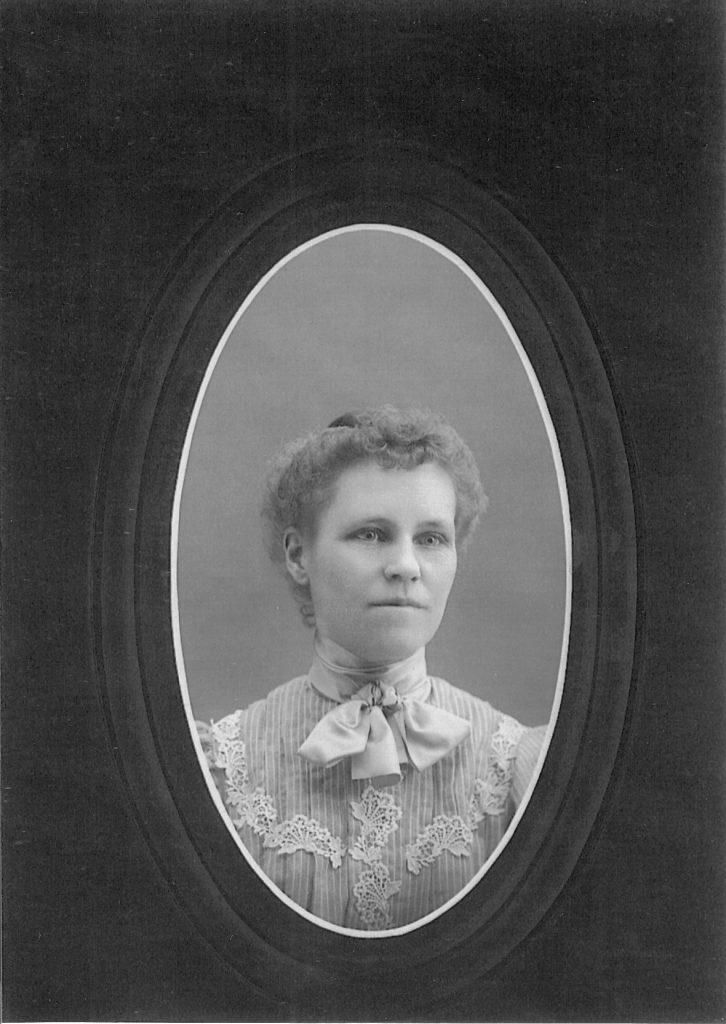
Biography from the Book: “Ancestors and Descendants of Frederick Chadwick Andrew”.
“Richard Septimus Whitaker Andrew son of Frederick Chadwick Andrew and Elizabeth Whitaker was born 2 November 1858 in Salt Lake City, Utah.
While still a mere lad, he worked for the Herald as an apprentice and later as journeyman where he gained the respect and friendship of all the members of the Herald force. Richard, or Doc as he was called, was a quiet, modest, and unassuming, commanding the admiration of persons much older than himself. They all remembered the time when he severed his connection with the Herald and turned to Battle Mountain, Nevada where he engaged in the printing business but soon returned to work again as a printer for the Herald.
On 12 May 1881, he married Elizabeth Orgill Croxall in the Endowment House by Daniel H. Wells. To this union came a son, Richard born 11 July 1883.
On account of failing health, he left the newspaper and took to driving a streetcar. These cars were drawn by mules or horses. The line ran from Second West and Fifth South to a place called Fullers Hill. Whenever the car got to Second West and Fifth South he used to run up to his home, just a little over a block away, to see his wife and baby. After a time, he seemed to feel that his health was improved and that he could now go back to his printing work.
At the young age of him was recorded in 24 years, the following information concerning the Salt Lake Herald, Sunday, 29 July 1883:
A terrible accident occurred in Godbe, Pitts & Co.’s Drug Store about 3 o’clock on Saturday afternoon, by which Richard S.W. Andrew – familiarly known as Doc – lost his life. Andrew has been a streetcar driver for some time, and in company with another driver had gone into the drug store above named to take a drink of soda water. In the northwest corner of the building, and perhaps eight or ten feet from the soda fountain, is a small board enclosure, which is utilized by Mr. Ichel Watters as a pawnbroker’s shop.
Mr. Watters had had a pistol fixed by Joseph Barker in the morning, which he had placed away; but having to obtain some articles found it necessary to move the pistol with others and forgot to return it. This was about fifteen minutes before Mr. Andrew entered the drug store, and as he came in, Mr. Watters noticed the pistol lying upon the safe, and picked it up. It occurred to him that he would see if Mr. Barker had fixed it properly. He held it in his left hand, the barrel pointing east and a trifle south, and the open door of his apartment gave the pistol a clear range in the direction of the soda fountain.
As Mr. Andrew raised the glass of soda water to his lips, Watters pulled the trigger of the pistol. The weapon discharged, and Mr. Andrew groaned and fell to the floor, the blood flowing copiously from a wound in the back of the neck, a little behind and below the left ear. Mr. Watters stepped out of his apartment and said, “My God, – what have I done?” It was learned that instead of taking the pistol which Barker had fixed, and which he knew to be unloaded, he had picked up another, similar in every respect, but loaded. Mr. Watters immediately surrendered himself to the police.
Andrew never spoke a word. He fell, and before he struck the floor, was dead. Dr. Pike says the unfortunate young man never knew what hit him. The ball passed through the upper spinal cords and lodged behind the right ear, his death being the most sudden possible. He was laid out and the drug store closed, and the body was finally removed to his home.
The funeral services this afternoon from over his remains will be held at 4 o’clock the Seventh Ward School House. Funeral services were held in the Seventh Ward Meeting House. Bishop William Thorn conducted the service and gave the opening prayer. Speakers were President John Taylor and President Woodruff.
Bishop Thorn gave a few closing remarks. The benediction was pronounced by Elder William McLachlan. The dedicatory prayer was offered by Elder Joseph E. Taylor.
Long before the hour announced for the holding of the services, the large hall was filled to overflowing, and as time proceeded, not only was all the available space in the interior occupied, but a large crowd were on the outside of the building. Mr. Watters, the unwitting cause of the sad circumstance, and his wife were present, and appeared deeply affected, the latter weeping during most of the services.
After the services were over, the coffin was taken outside and placed under the shade of some trees, the large audience passing the casket on each side of it and viewing the face of the dead. The remains were followed to the cemetery by a large cortège.”
Obituary of Mary Elizabeth Croxall Andrew:
“Mrs. Mary Elizabeth Croxall Andrew, 73, mother of Bishop Richard D. Andrew of the Sixth-Seventh ward, died early this morning at the family residence, 261 West Fourth South Street, of a heart attack following a week’s illness of influenza.
Mrs. Andrew was born in New York City, Feb 10, 1861 as her parents Jonah and Eliza Orgill Croxall were immigrating to Utah. She crossed the plains in a covered wagon as an infant and lived throughout her life in the Seventh ward where her father was established as an expert pottery maker and glazier and where members of her family were prominent in pioneer musical circles particularly her brother Mark Croxall, cornetist at the old Salt Lake Theater and leader of the Croxall band.
She was married to Richard Septimus Andrew in the old Endowment House by President Daniel H. Wells and within two years her husband was accidentally killed. Throughout her life she has been active in various Church auxiliaries particularly the Relief Society in which she has been a teacher for the last 16 years.
Surviving besides her son and daughter-in-law, Louise Cannon Andrew, are five grandchildren, Richard C., Denton C., Betty and Louis Andrew, all of Salt Lake, and John Q. Andrew, serving on a mission in the Hawaiian Islands.”
Elizabeth Ann Wells 1859-1942
John and Annie are buried in the Salt Lake City Cemetery
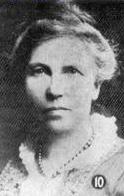
Biography of Elizabeth Anne Wells Cannon (Annie Wells Cannon) December 7, 1859 – September 2, 1942 by Margaret Cannon Clayton
At the time of father’s death, in an article referring to the survivors, someone wrote, “Eleven children, thirty-seven grandchildren, and one great grandchild are the immediate descendants of the Cannons’. A family such as this provokes an interesting query.” Just what is a million dollar family? Loyal, affectionate and courteous the Cannon Family was and is an ideally happy family.
Of father and mother, friends have said that the home life of the Cannons’ might serve as a pattern for devotion, compassion, companion ship, and mutual understanding. Such was the home in which we were privileged to grow.
What more could any of us ask than that we might leave such a legacy to our children and grandchildren than our parents left to us. The sight of our old home, though now much changed, never fails to bring back fond memories as we pass. The sacredness within these walls, the spirit of love and unity, we will never forget.
So, as I have read through the many clippings, newspaper items, letters sent to her and parts of her own autobiography, I have begun to realize what a wonderful person our mother was, not only to us her family, but to the Church, City, State, and Nation. And I marvel how little we knew her! I have read and listed many of the things she did, the part she played all her life, always with such modesty, that we who were closest to her failed to realize her greatness.
She was born December 7, 1859 to Daniel Hanmer and Emmeline Blanche Woodward Wells in a two-story adobe house on State Street between Second and Third South in Salt Lake City. Her father was a direct descendant of Thomas De Wells, the fourth Governor of Connecticut, and of Daniel Chapin, a soldier in the American Revolution. Daniel H. Wells, himself a military man, acted as Commissary General under the Prophet Joseph Smith in the Nauvoo Legion, and on arriving in Utah, organized a Nauvoo Legion here; was appointed Major General and led the forces in the Indian War in 1853 and again in 1856. In 1856 he became Lieutenant General, an office he held until 1887, when the Legion was abolished by the Edmunds Tucker Law. Her mother’s family was also represented in the early American Wars by her grandfather and great grandfather. Her mother’s family had a long line of names distinguished for literary ability.
From these parents she inherited much, for in this home she spent the first twenty years of her life. As a little girl she evidenced characteristics of leadership, which were very pronounced in her later life. As a child she organized little girls’ clubs, dramatic groups, and held meetings among her playmates in her home. From here she watched the wagon trains and the hardcarts come into the valley. From this home, also, she attended the very best schools there were at that time the Deseret University, a forerunner of the University of Utah. In this home, she learned early the useful and beautiful things of life; the appreciation of good books, good music, of drama and opera, and was encouraged to write. The best books and papers that could be had were brought into this home where, with her dear mother whom she adored, she and her sisters read, studied, and dramatized together.
Naturally a religious child, she had an almost perfect attendance at Sunday School, once wading through deep snow only to find one member of the Superintendency who had braved the storm. On her tenth birthday her father gave her a New Testament. It was a large volume, clear type and no pictures. Because it was given to her by her father, whom she held in deep reverence and great love, she felt it her duty to read it, but ever after it became an inspiration and a guide throughout her life.
At fourteen she became a member of Relief Society, a membership she held until the time of her death. One of her first tasks was learning to braid straw in the home of Sister Annie Musser. She also acted as a visiting teacher at times. Her days counted back from those of candle light to electricity; from the wagon trains to the air planes; and she saw the city and state grow and visited most of it as well as many parts of the United States, Canada, Mexico, and Europe.
At twenty she became the wife of John Quayle Cannon, a prominent and public-spirited man. In 1881 he was called to fulfill a mission in the British Isles; first in England and later he was transferred to Germany. In 1883 she joined her husband and spent a delightful year attending operas, visiting art galleries, museums, and sight-seeing as well as doing missionary work. While there she wrote the “History and Objectives of the Relief Society,” which was published and translated into several languages.
Her husband was always interested in military life. He became active in the National Guard, organizing a Cavalry troop (I think the first in the State) and for many years was Adjutant and Brigadier General of the Guard. He was a volunteer in the Spanish American War, organizing Company I — a group made up mostly of young L.D.S. boys from the southern part of the State which joined Torrey’s Rough Riders, officially known as the Second Volunteer Cavalry of the United States. While with Company I, he was elevated to the rank of Lieutenant Colonel; the same rank held by his close friend, Theodore Roosevelt of the First Volunteer Cavalry. Father was proud of this title and was known as Colonel Cannon from then on. With this background and mother’s own descent from a long line of military leaders, it seemed only fitting that three of her fine sons signed up for service in the First World War; Cavendish Wells in the Marines, Abram Hoagland in the Army, and David Woodward in the Navy.
With the war came many new activities for mother. She became actively engaged with the Red Cross, writing to Steven Barton, a brother of the famous Clara Barton, for instructions in organizing and directing Red Cross Chapters in Utah. She helped to gather supplies, and organized the Pioneer Gauze Room where many women worked learning to make and roll bandages. She became affiliated with the War Mothers’ Group where she was elected President. She was also twice State President of the Service Star Legion, and was active on the committee for the establishment and development of the Memory Grove Memorial.
During this time the members had asked for twenty acres of ground in the lower City Creek Canyon area for the memorial and for the planting of hard wood trees — mostly of the flowering variety. The City Commission granted this request and a gateway to the park was erected. A box, made of Utah copper, containing a history of the War Mothers, the Service Star Legion, the Gold Star Mothers and other valuable and interesting papers were placed in this box, which was deposited in the cornerstone of one of the pillars. Mother’s contribution to this box was the history of the War Mothers from the beginning until 1919.
About this time the Service Star women, with the heads of the national leaders of the American Legion, unitedly stressed the idea that Armistice Day should be a day dedicated to America and the finer things that we have been privileged to enjoy in this great country of ours.
She spent many hours organizing and placing canteens at various stations for the local boys, or other boys just passing through who were meeting trains day or night. This was always a work of comfort and cheer, often for the mothers as well as the boys. During her two terms as President of the Service Star Legion she attended a convention in Atlanta, Georgia and a convention of the National Council of Women held in Washington, D. C., with which a number of her organizations were affiliated. Later, in 1931 she attended a convention of the Service Star Legion held in Cleveland, Ohio.
In 1932 she was asked to prepare the history of the Service Star Legion for the National Council of Women, to mark 100 years of women’s progress for the “Century of Women’s Progress Exposition” which was to be held in Chicago in the summer of 1933. She also prepared a chart of the Service Star Legion and wrote the accomplishments of the society for the then official magazine which was distributed at the Fair.
She was chosen by Herbert Hoover, who later became President of the United States, to be Utah’s Chairman for the European Relief Drive, and received personal and complimentary letters from him. As each State was assessed a certain quota to raise, mother consulted, as always, with the Church Authorities on important matters, and at this time it was decided to set aside the day January 23, 1921 as a special fast day to raise this vast sum for the starving children in Central Europe. In a campaign of only one month, to quote from the Millennial Star of March 1921,” The Church asked its people to abstain from two meals and donate the equivalent to this fund. Under Church organization and the auxiliary associations, every Ward (nearly one thousand) and nearly every Sunday School participated, and the grand total of cash contributions sent in amounted to $109,834.42.”
The contribution from the Primary Association of sixty thousand little children, who gave their pennies, nickles and dimes, reached the splendid sum of $4,230.21. Mrs. Annie Wells Cannon, the Utah Chairman of the Relief Council was the only woman chairman in the United States. She was exceedingly happy in making the announcements to Mr. Hoover of this wonderful result, which in proportion to the population put Utah in advance of any of the States, and the Mormon people above any church or philanthropic organization in America.” The money was sent directly to the Presiding Bishop’s Office where it was distributed under the direction of President Grant. As the Church had many members in Europe, some of this was sent directly to the Mission Presidents. The funds were distributed as follows: Near East Relief Fund $30,000.00 of which $6,000.00 went directly to the relief of Latter-day Saints;
$5,516.21 went directly to President George Albert Smith for relief of the poor in the European Missions. This sum was collected from the American, Canadian, and Mexican Missions. The donations from the Stakes outside of Utah amounted to $22,431.77 and was remitted directly to the General European Relief Fund, which also received the Utah contribution of $45,887.44. This vast sum for the starving children of Europe in an international campaign of only one month, under her leadership, more than doubled its quota. After the completion of this drive she was invited to become a board member of the American Relief Association Children’s Fund, Inc. with headquarters in New York City, a position she held for many years.
In 1918 she was elected an Associate Vice President of the American Flag Association, a national organization. She was appointed by the Governor to the committee for the official welcome to the State’s 22,000 heroes at the end of World War I, and was asked to give the address in behalf of the mothers at the Memorial Exercises held in honor of the soldiers who died in service for their country. The memorial exercises were held at the University of Utah.
She was called again by the Governor to be on the reception committee on the occasion of President Wilson and his party’s visit to Utah. She recalled with much pleasure that this was not the first time she had greeted a President of the United States. As a little girl, dressed in white, with a wreathe of flowers on her head and a flag in her hand, she stood in line with hundreds of Sunday School children, waving the flag as President Ulysses S. Grant rode through the streets of Salt Lake; and later in 1880 she was one of those chosen to go out on the train to meet President Hayes and his party on the occasion of his visit to Utah. It was her delightful honor to be seated beside General William T. Sherman, and conversed with him on the way into the City.
Later she met other Presidents or those who were elected Presidents later.
In 1934 she was awarded a medal and given a testimonial as one of the seven outstanding women in Civic Service in the State of Utah. (I think this was the first year this was done.)
She served for twenty-three years as a member of the Salt Lake Public Library Board. She was assistant editor of the Women’s Exponent, the first women’s paper published in the Mountain States, and also held the position of Honorary Member for Utah of the American Women’s Association of Professional and Business Clubs. She was a contributor to prose and poetry in popular magazines; was co-author of the Relief Society Handbook and author of biographical sketches of many prominent women. All her life she was interested in political action and woman’s suffrage. In 1883 she was a delegate and assistant secretary to an important political convention, and prior to this, when still a young girl, read before a large audience in the Salt Lake Theatre a series of resolutions adopted by a vast mass meeting or women.
As a member of the Republican Party in 1921, she was elected to the Utah State Legislature, was one of the three women largely responsible for the passage of the extensive social program for the betterment of women and children; the minimum wage for women, better working conditions, rest periods, also cooperated in the passage of the Dependent Mother’s Pension Law. She helped with the law creating the office of a woman deputy in the department controlling the employment of men and women. One of her associates remarked that, “Mrs. Cannon was always doing things for women.” If there was a position where either a man or woman could do the work, her vote would be given to the woman, with equal pay for training and ability. One law of which she was very pleased to see pass was for the building of a girls’ dormitory at the University of Utah, the first law of this kind ever introduced into the legislature. “With her usual thoroughness, she never missed a roll call during the entire session,” according to the newspaper.
In 1903, the Daughters of the Revolution designed and made the first Utah flag and presented it to Governor Heber M. Wells. It was made of white Utah silk with the center as we have it today, and is now in the State Capitol. In 1912 when the Battleship Utah was built, the Sons and Daughters of the Utah Pioneers had an Eastern firm make another flag, with the same insignia, but on a field of dark blue. When the flag arrived, the insignia was circled by a gold ring. Through the efforts of mother, who was in the Legislature at that time, the flag with the gold circle was accepted as the State Flag of Utah and presented to the Battleship. Later when the ship was destroyed, the flag, tattered and torn, was burned according to the regulations governing flags.
Mother was a member of both the Reapers and Women’s Press Clubs, but was never particularly active in either one. She was a charter member of the Daughters of the Utah Pioneers and among the first to promote the idea of the saving of relics, restoring landmarks and writing histories to preserve our heritage. She was the tenth president of the group and helped in selection of the site for the permanent building, and from the beginning was active in raising funds for it.
While she was president, a tree was planted in her honor in the Pioneer Grove at the Capitol Grounds, a spot set aside for the purpose of a tree for each president. At this ceremony, Governor George H. Dern was the speaker. Rulon S. Wells gave the dedicatorial prayer, and Winnifred S. Cannon, in her lovely voice, sang, “Utah We Love Thee,” and the beautiful solo, “Trees.”
In 1910 she and Sister Amy Brown. Lyman attended a special meeting of the Daughters of the Pioneers, where all the Charter members were invited guests. Here again she was asked to be the speaker, and dedicated her talk largely to the society’s cherishing and preserving the historical narratives of our people and handing them down to our posterity. But with all of these activities, the Relief Society was her foremost interest in life.
Oh rich is life, as down
The vista of the years we look, And find
Within time’s golden book
The treasures of the human mind. No satin pearls in ocean depths, Nor emeralds from Peruvian mines,
Nor rubies rare from southern climes
Would we compare
With gems of thought enfolded there.
–Annie Wells Cannon
This was a glorious achievement so near the close of her wonderful life.
PERSONAL AND HOME LIFE
Father and Mother were formally introduced to each other, and on the following New Year’s Eve became engaged and were married in the Endowment House by Daniel H. Wells on the 17th of March 1880. This marriage united two outstanding pioneer families, giving us a wonderful heritage. For more than fifty years, they enjoyed love, companionship and mutual understanding, watching the growth and development of children and grandchildren. Twelve children were born to this outstanding couple.
One little girl was taken from them at eighteen months, but eleven of us grew to maturity in a home that was loyal, courteous, and affectionate to each other — a truly happy family. Early there were other homes but for forty years we lived and enjoyed life in the large, spacious home on the Cannon Farm. Someone once asked mother how she managed with her big family and large house: “When the children were small there was always help in the home, but as they grew older they all had responsibilities,” she replied. At one time she asked one of the boys, “Do you think you children lost out because I had other than home responsibilities?” The prompt reply was, “No Mother, I don’t and that is the wonderful thing about it.”
We were a healthy family, having not much sickness excepting childhood diseases, and mother, with all her other abilities, was a good home doctor and nurse, and then too there was always plenty of faith exercised in our behalf. I think we would not have been called a strictly religious family, but we were taught very early to pray, to take our part in family prayers, and to always ask the blessing of the Lord on the food. We were all baptized on our eighth birthday, making it an extra special day for us, and the entire family rejoiced when the boys were ordained deacons and were promoted to higher priesthood quorums. We were active in Ward and Stake organizations and I think none of us ever refused to accept any obligations we were asked to fulfill.
Father was a wonderful Sunday School Superintendent; Jack and Ted later held the same position. Father, Mother, Louise, Cavendish, Jack, and Ted all held Stake positions. Mother, for a number of years taught an adult class, or as it was then called, the parent’s class in the Sunday School, and I suppose we all taught in that and other organizations at one time or another. Mother attended the Dedications of the Salt Lake Temple, and with President Heber J. Grant, attended the Dedication of the Arizona Temple at Mesa. She was never called to be a regular temple worker but spent some time in Manti, doing work there while her father was President of the Temple, and again in the Logan Temple, and during all her life went frequently into the Salt Lake Temple.
As I look back I think there was very little lacking in our home life. From our earliest recollection we always had a Sunday evening home night; all of us taking part in song, story, games, or recitations that mother always had time to teach us during the week, and how proud we were to stand up and repeat them. Father and mother always did their part, and then there was popcorn in the winter – which father popped over a bed of red coals in the fireplace, from such a fire as only father knew how to make. In the summer we had homemade ice cream, with our evening closing with prayer.
Sunday was always a special day at home, beginning with a very nice breakfast with favorite foods we all like, and all sitting down together; then in the afternoon a delicious dinner – always with the best linen, dishes, and cutlery – nicely served and never hurried. Incidentally, we never ate in the kitchen, and except for a Saturday lunch, our dining room was always used for two meals every day, all members eating together. How did mother find time for all these things — the big jars of mincemeat she made every fall, the fruitcakes, and always four plum puddings – one for Thanksgiving, Christmas, New Year’s and one saved for father’s birthday in April, and to our delight flaming on the table. She couldn’t walk into a store and gather her ingredients ready-for-use as we do. Raisins had to be stoned, currants picked over and washed in many waters, nuts cracked and chopped, peels sliced, and even nutmeg had to be grated, and then long hours of mixing and baking. Always there were bottles and jars of fresh fruits, jellies, pickles, and catsup stored for winter use. I don’t remember her ever doing any of this work in the evening, for after dinner she sat in her wicker rocker, reading the evening paper, sometimes helping father with proofreading some of his articles or some of hers, or perhaps just sewing or darning while he read aloud. We listened or did our homework at the big dining room table. Company sometimes dropped in but mostly we just had quiet family evenings.
Then there was the sewing. Again, many articles we take for granted now were made in the homes. Sheeting was bought by the yard or bolt to be torn and hemmed, pillowcases and garments cut and made and, of course, always mending and darning, often new and dainty baby layettes, mostly done by mother’s hands. About twice a year, a sewing woman came to our home usually staying a week to do some of these things but also to make nightclothes, shirts for the boys, dresses and underclothes for the girls and always pretty and dainty white aprons especially for Louise and me to wear to school over our woolen dresses during the winter months.
While mother was doing these routine tasks, I am sure her active mind was busy planning a talk she was to give, composing a poem, a story, or an article, with a paper and pencil somewhere near to jot down notes or facts for future reference.
I have seen her at the ironing board with papers or book close by reciting poems or memorizing something she wanted to remember or perhaps just reciting aloud just to, as she said, keep her “voice in timbre.” Then sometimes she would sing for us some of the songs from “Robin Hood” or “Pinafore,” but more often as we stood around and watched her as she bathed and dressed a baby she would teach us some of the children’s songs we still remember – “Forget-me-not,” “Billy-Boy,” “The Hen With Ten Chicks,” and we all enjoyed hearing her recite “The Black Berry Girl,” and “Proud Charlotte,” These were two of our Sunday night favorites.
From father we learned the nursery rhymes with the A.B.C. backward and forward as a chorus while he rocked us in his big leather chair.
These are some of the things we would like to hand down to our posterity.
In this home we learned our religion, the Bible stories, the lives of the Prophets of the Book of Mormon, stories of the Pioneers and early days in Utah. We had the best books to read and study, not only church books but the best of everything, besides the wonderful example set for us by our parents.
As the years went by, many changes came into the family. I have already mentioned the boys in the service, but the first break came into the family when in 1900 George Q. was called as a missionary to go into Mexico and South America with an expedition for the B.Y.U. Problems arose and they didn’t get as far as intended, but he fulfilled his part well and was away several months. Daniel was called on a mission to Holland, and Abram to the Northwestern States. Along with these came engagements and weddings — Louise and Katherine both having lovely receptions at home after Temple marriages. I had a small afternoon reception before leaving for a wedding trip, and Emmeline a lovely wedding breakfast after her marriage to Lyman. The outstanding event in this home, however, was the Golden Wedding Reception of father and mother.
The home was beautifully decorated and such a wonderfully happy and handsome couple receiving their many guests, some of whom had attended their reception fifty years earlier. Most of the children were present, but the boys who were away telephoned during the evening to make their day complete. Lovely gifts and flowers were received and delicious refreshments were served by their sweet granddaughters.
During the last few years of her life, grandmother came to live with mother. She was 93 years old and General President of the Relief Society, and though she attended and presided at most of the meetings, she was not well enough to live alone, and although she had been living in the Hotel Utah for sometime, someone had to be with her almost constantly until she moved to mother’s home in about 1920. She was happy there, and enjoyed being with father and mother. Katherine and the younger boys were still at home and in school. In the large bedroom with a fireplace where, whenever it was chilly, the boys made a fire for her, she spent her last days. And there she quietly passed away on the 21st of April 1921. As had been her request, all arrangements for her funeral and burial took place there and she was not taken from the house until time for the service held in the Tabernacle.
I think this was the first and only death to take place in that house from the time it was built, and there has only been one since then, after the house was sold.
Katherine was married in 1921 and the four boys all in 1928, leaving father and mother alone in the big house. As his health was not too good, and while they kept the big home, they spent the winter months of the next few years in the Hotel Utah. (However, in 1930 the home was again opened, cleaned and lived in at the time of the Golden Wedding.) From the Hotel it was easy for father to get to his office, and mother was freed from many household chores and was close to the things she was so interested in. It was a pleasurable time for both, always so many pleasant and interesting people around, meeting and conversing with Church people and close friends who were also living there.
It was here in 1931 that father was called away from mother and his children, less than a year after their fiftieth wedding date.
Father had been connected most of his life with the Deseret News, and for many years had worked in the old building that stood where the Hotel now stands so it seemed almost like home ground for him to die there.
Mother stayed on at the Hotel for some time but going back and forth to the old home, clearing out many things and getting it ready so that part of it could be rented, or at least a caretaker could live there.
During the summer she went East to visit the boys, three of whom were living in Washington, and Cavendish in the Diplomatic Service, coming back to Washington frequently. On coming home, she took an apartment in the Belvedere, renting the family home on 9th West. Here she was quite comfortable, and many persons she knew were living there, among them her brother, Heber M. Wells and his charming wife and daughter, Sister Talmage, Brother and Sister Callis, and many others. She was where it was easy for all her family to keep close to her and easy for her to get to those places where she wanted to go.
A fire in July of 1939 broke out in the old home, entirely des troying the roof and doing some damage inside. Though the roof was replaced, the tall attic windows and the high roof in the front were gone, which resulted in a change in the appearance of the place. The following year an offer was made to buy the house which mother thought best to accept which relieved her of collecting rent and of taxes.
She stayed on at the Belvedere, making it a home with furniture from the old house. She was always busy, still working on the Anthology, continued writing “Happenings,” wrote several articles for the Era and
other papers, attended all her meetings, and was active in making arrange ments for meetings held every Sunday at the Sarah Daft Home. These meet ings consisted always of a special speaker. As the women there were of all religions, the speakers were not always L.D.S., but from various churches or were prominent men or women in civic life, and there were also musical numbers.
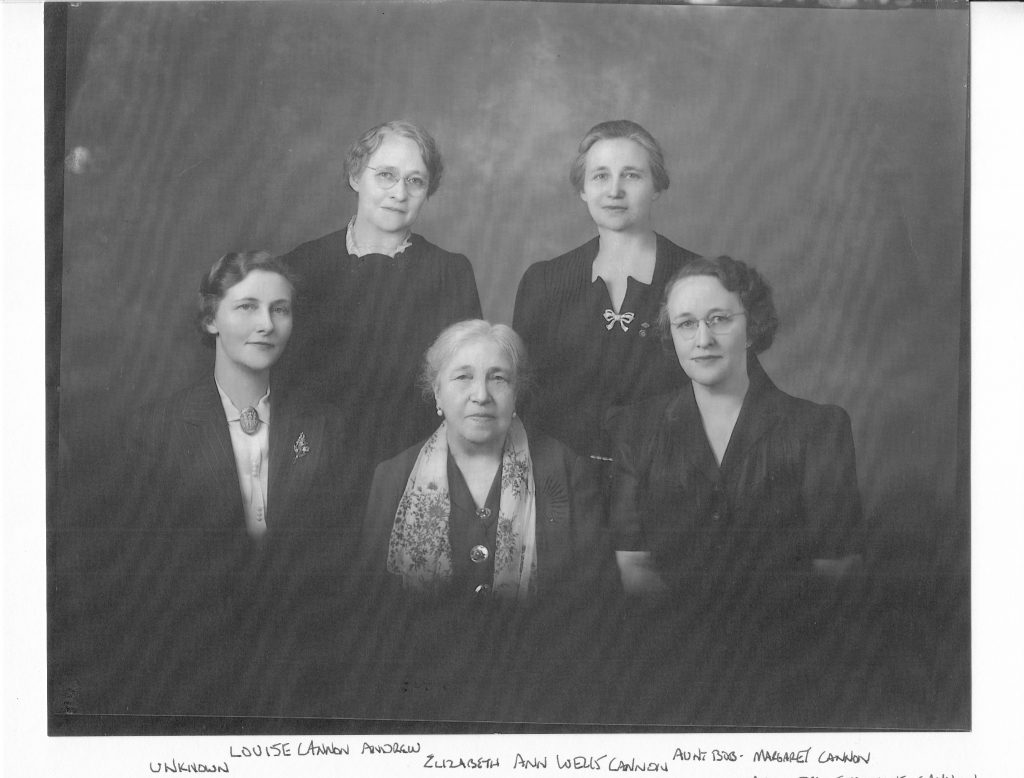
This is another Biography
Elizabeth Ann “Annie” Wells Cannon
An Enduring Legacy, Volume One, p. 233
Annie was a daughter of Daniel Hanmer Wells and Emmeline Blanche Woodward Wells. She was born December 7, 1859, in a two-story adobe house on State Street between Second and Third South streets in Salt Lake City. From this vantage point, she watched the wagon trains and handcarts come into the valley. She attended the best schools available at that time, including the Deseret University. She was taught at an early age the useful and beautiful things of life, including appreciation of good books, good music, drama and opera, and was encouraged to write. The best books and papers that could be obtained were brought into this home and with her dear mother, whom she adored, she and her sisters read, studied and dramatized together.
Naturally a religious child, she had an almost perfect attendance at Sunday School, once wading through deep snow to find only one member of the superintendency had braved the storm. On her tenth birthday her father gave her a New Testament, which she felt it her duty to read, but ever after it became an inspiration and a guide throughout her life. At age fourteen she became a member of the Relief Society, a membership she held until the time of her death.
At age twenty she became the wife of John Quayle Cannon, a prominent and public-spirited man. In 1881 he was called to fulfill a mission in the British Isles, working first in England. Later he was transferred to Germany. In 1883 she joined her husband and spent a delightful year sightseeing as well as doing missionary work. During this time she wrote the History and Objectives of the Relief Society, which was translated and published in several languages.
John Quayle, always interested in military life, became active in the National Guard and for many years was adjutant and brigadier general of this organization. He also became a volunteer in the Spanish American War and he was elevated to the rank of Lieutenant Colonel as a result of this service.
At the beginning of World War I, Annie became actively engaged in the Red Cross, organizing and directing Red Cross chapters in Utah. She became affiliated with the War Mothers’ group and was elected president. She was also twice state president of the Service Star Legion and was active on the committee for the establishment and development of the Memory Grove Memorial. She spent many hours organizing and placing canteens at various stations for the local boys or other boys just passing through who were meeting trains day or night. She was chosen by Herbert Hoover, who later became President of the United States, to be Utah’s chairman for the European Relief Drive. In 1918 she was elected an associate vice-president of the American Flag Association, a national organization, and was appointed by the governor to serve on the committee for the official welcome to the state’s twenty-two thousand heroes at the end of World War I.
She was asked to be on the reception committee when President Wilson and his party visited Utah. She recalled with much pleasure that this was not the first time she had greeted a President of the United States. As a little girl, dressed in white, with a wreath of flowers on her head and a flag in her hand, she stood in line with hundreds of Sunday School children to greet President Ulysses S. Grant as he rode through the streets of Salt Lake. In 1880 she was chosen to go out on the train to meet President Hayes and his party on the occasion of his visit to Utah.
In 1934 she was awarded a medal and given a testimonial as one of the seven outstanding women in civic service in the state of Utah. Among her various accomplishments was her service as assistant editor of the Woman’s Exponent, the first women’s paper published in the Mountain States. She contributed prose and poetry to popular magazines, co-authored the Relief Society Handbook, and was author of biographical sketches of many prominent women. As a member of the Republican Party, she was elected in 1921 to the Utah State Legislature, and was one of the three women largely responsible for the passage of the extensive social program for the betterment of women and children, the minimum wage for women, better working conditions, and cooperated in the passage of the Dependent Mother’s Pension Law.
A charter member of the Daughters of Utah Pioneers, she was among the first to promote the idea of saving relics, restoring landmarks and writing histories to preserve our heritage. During her term of office, the Daughters helped sponsor the Twenty-fourth of July celebration and inaugurated the honoring of past presidents and charter members of the society. She helped in the selection of the site for the permanent building and from the beginning was active in raising funds for it. In 1910 she and Amy Brown Lyman attended a special meeting of the Daughters where all the charter members were invited guests. At this event Annie was asked to be the speaker and dedicated her talk largely to the society’s cherishing and preserving the historical narratives of the pioneers and handing them down to posterity.
With all of her activities, the Relief Society was her primary interest. In October 1902, she became a member of the Relief Society General Board, participating in many and varied projects. Following the San Francisco earthquake, April 21, 1906, she was among those called to gather and supervise the sending of supplies to the earthquake sufferers. In 1906 she aided in the preparation of a pamphlet on the question of saving wheat, which was distributed among the Relief Societies. Responding to a call from the Presiding Bishopric of the LDS Church, a supply of linen for the Groves LDS Hospital, then nearing completion, was obtained. After her mother, Emmeline B. Wells, became the general president of the Relief Society, she was able to help her in many ways, especially with the Woman’s Exponent. At this time she was doing nearly all the writing, editing, proofreading, and taking charge of the publishing and mailing.
For more than fifty years Annie and her husband John enjoyed love, companionship and mutual understanding, watching the growth and development of children and grandchildren. Twelve children were born to this outstanding couple, eleven of whom grew to maturity in a home that provided loyalty, courtesy and affection. It was a truly happy home according to her daughter, Margaret Cannon Clayton, who provided the information from which this biography was taken. She stated that death came to Annie Wells Cannon September 2, 1942, and comments: “Mother died as she had lived, calm, serene and majestic, ready to meet her loved ones and ready to go forward to greater heights. Certainly her cup of life was filled to the brim. President David O. McKay, one of the speakers at the funeral service, closed his remarks by saying, ‘All her activities were incidental to her crowning glow of motherhood.'”
The links below are to additional articles and some of Annie’s writings.
John Quayle Cannon 1857-1931
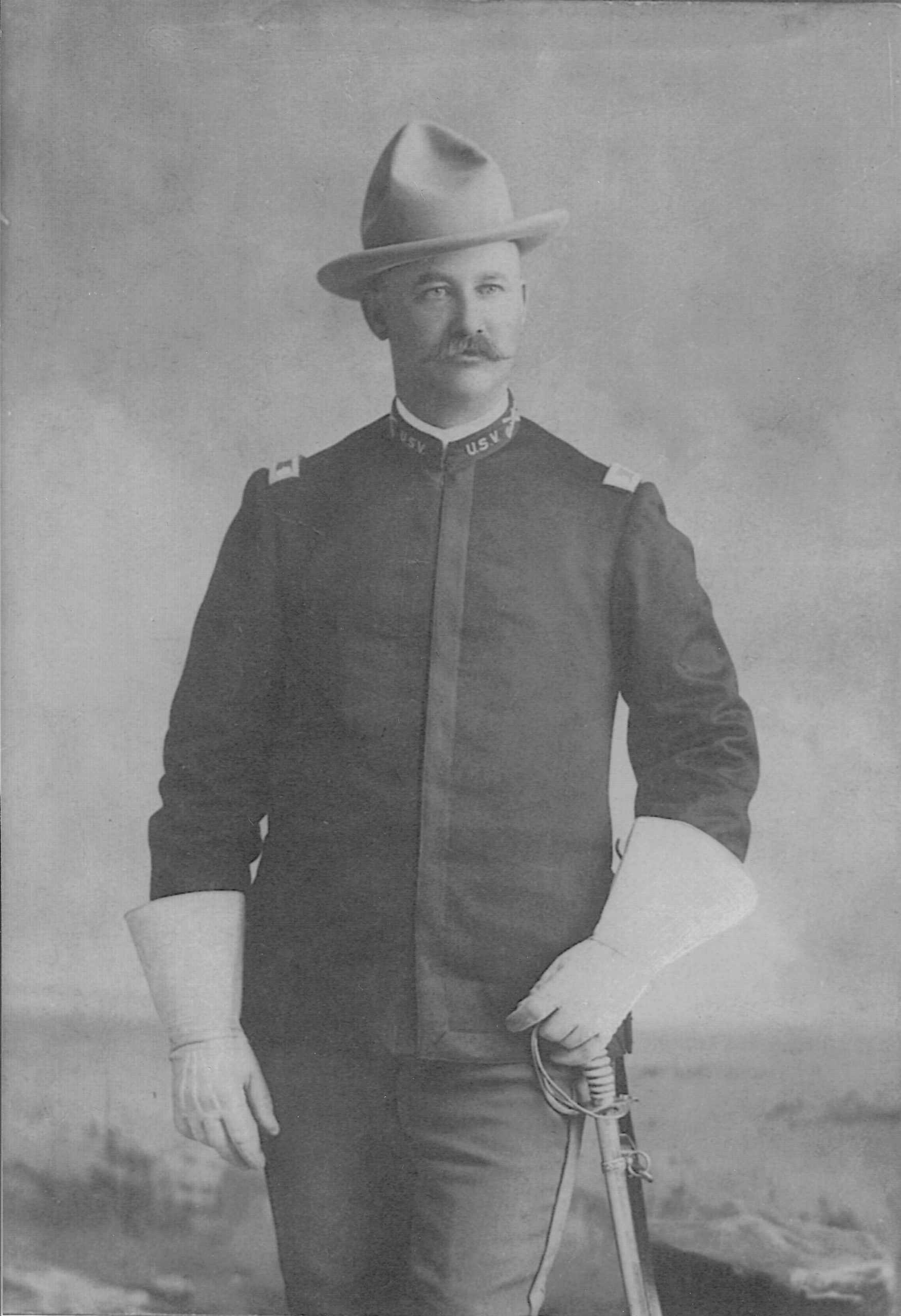
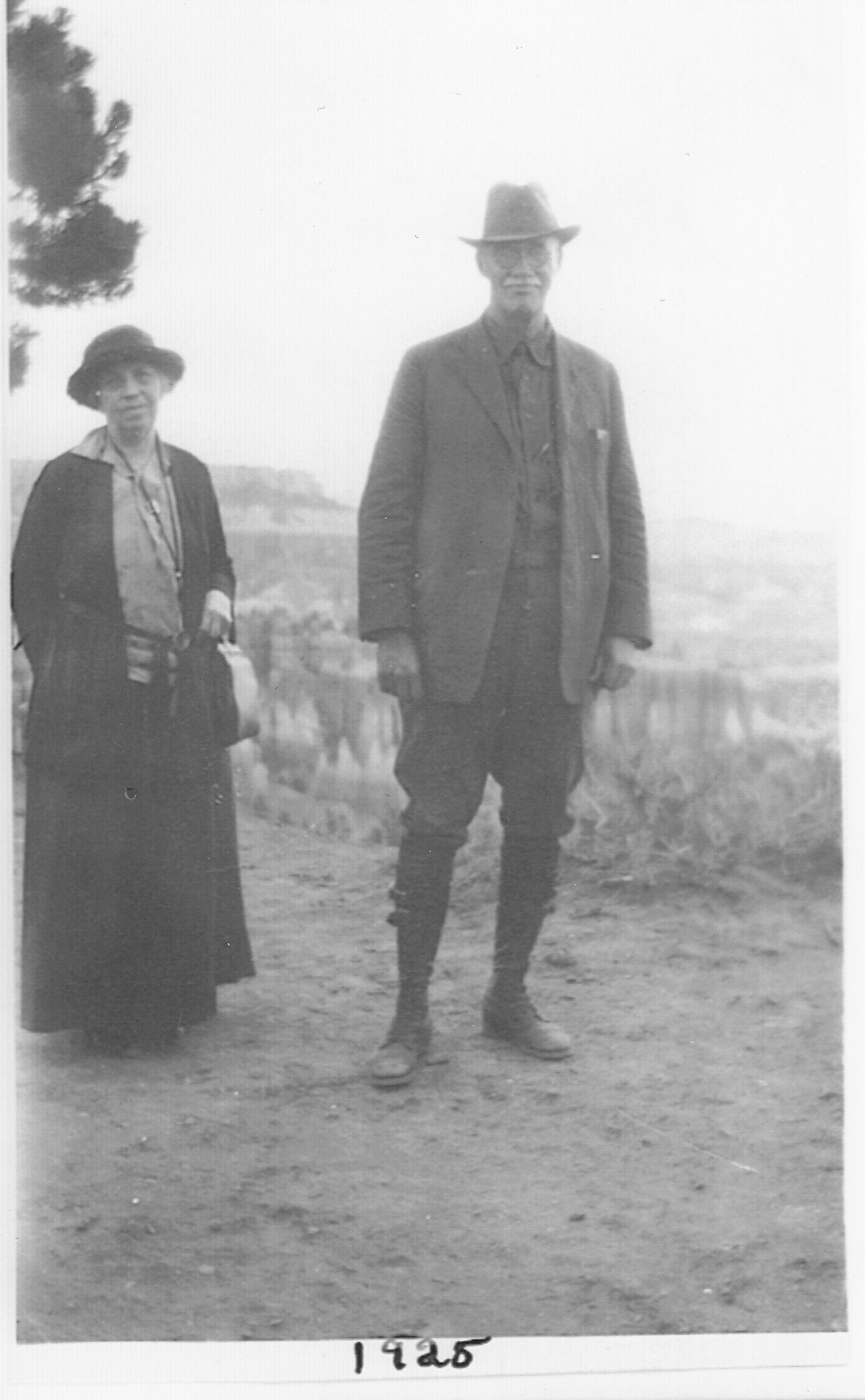
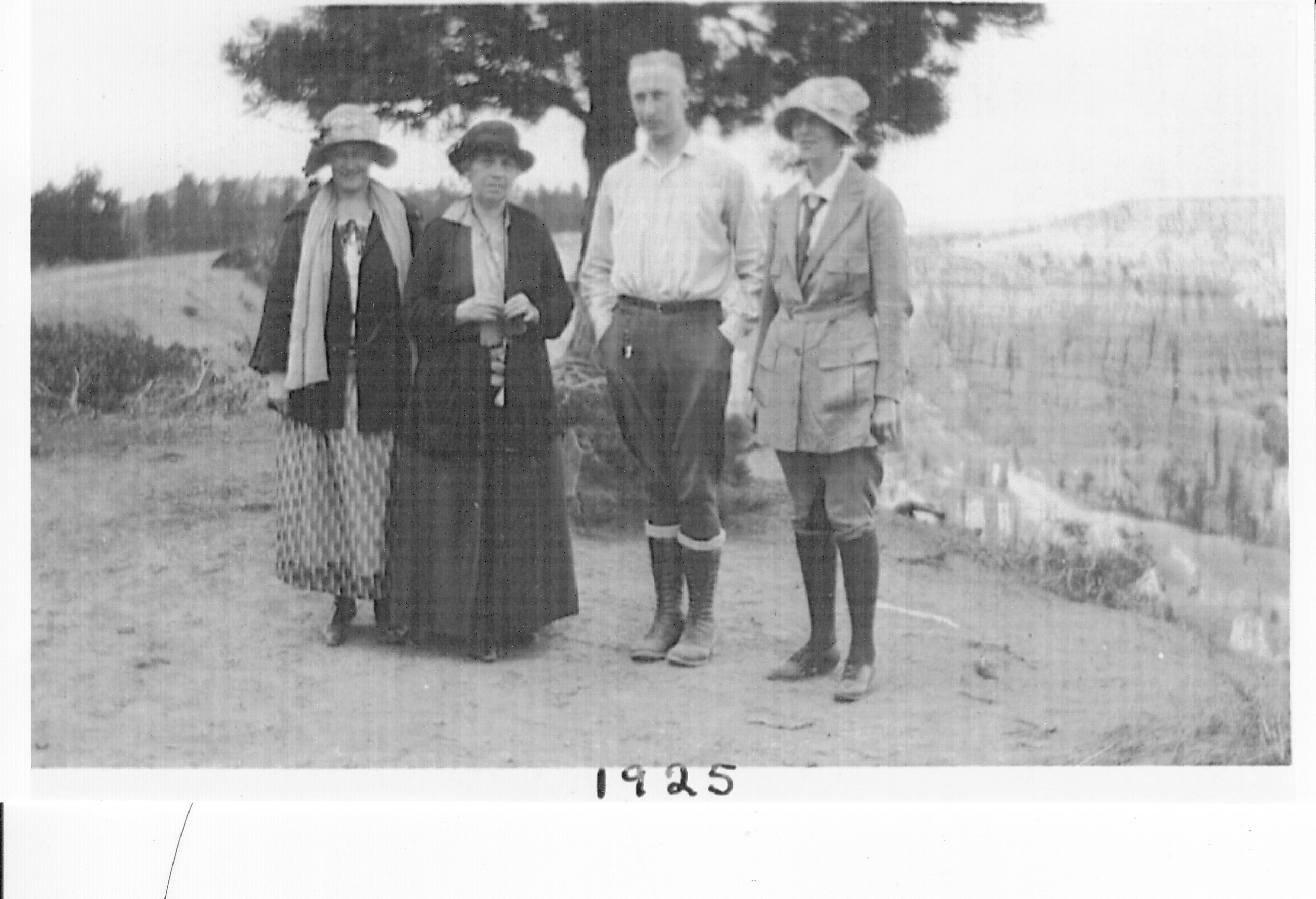
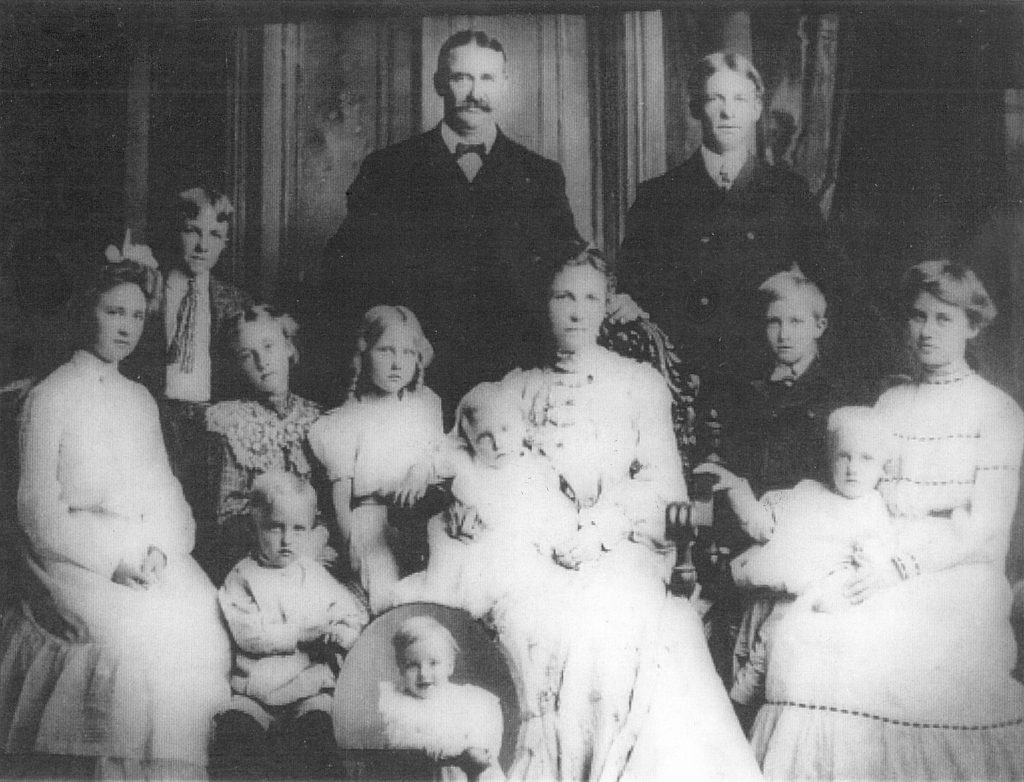
John Quayle Cannon was the eldest son of George Q. Cannon and Elizabeth Hoagland, and was born in San Francisco, Cal., April 19, 1857, his father at that time being on a mission to California, accompanied by his wife. They returned the following winter to Salt Lake City, where John Q. was baptized by his father, April 19, 1865. In July, 1873, he was ordained to the office of an Elder.
John learned the trade of a printer at the Deseret News Office. He was married to Elizabeth Anne “Annie” Wells, daughter of Daniel H. wells in 1880. They would eventually have twelve children but before that he was called to take a mission to Europe. He left home Aug. 9, 1881, and arrived in Liverpool, England, on the 27th.
After laboring in the London conference for about seven months, he was called to the Swiss and German Mission, where he labored a short time in the North German conference; afterwards he was secretary of the mission, with headquarters at Berne, Switzerland, and finally succeeded P. F. Goss in the presidency of the mission. He occupied the latter position for about ten months. Before returning home he visited the principal cities on the European Continent, having been joined by his wife, in whose company he returned home June 25, 1884, after an absence of about three years.
At this same October conference Elder Cannon was appointed to act as second counselor to Presiding Bishop Wm. B. Preston, a position which he occupied until September, 1886. He was released from the presiding Bishopric and excommunicated from the Church September 5, 1896, the result of an unwillingness to abide the constraints of the Manifesto and the moral codes of the Gospel. It is unclear to Grampa Bill whether this involved an unauthorized plural marriage or immorality outside the bands of marriage. He, however, manifested a spirit of repentance and was rebaptized two years later on May 6, 1888.
From 1889 to 1892 he was editor of the Ogden Standard, and from October, 1892, until the breaking out of the war with Spain, April 1898, he was editor in chief of the Deseret News.
Having been since 1894 prominently connected with military affairs in Utah, he enlisted as a volunteer for the Spanish-American war, and in May, 1898 was commissioned lieutenant-colonel of cavalry, serving as such in Florida until mustered out at the close of hostilities.



John and Annie are buried in the Salt Lake City Cemetery
